As a health-conscious individual, we always seek ways to improve diet and snacking habits. One of the most effective ways I have achieved this is by incorporating fruits into my daily snacking routine. Not only do fruits offer a wide range of nutritional benefits but they are also tasty and convenient. In this article, we will share with you some of the reasons why choosing fruits for snacking can boost your health, as well as tips for incorporating them into your diet.
Introduction to Healthy Snacking and Its Benefits
Snacking is an essential part of our daily lives and can either make or break our health. Healthy snacking involves consuming nutrient-dense foods that provide our bodies with the energy and nutrients we need to function optimally. Healthy snacking has numerous benefits, including:
- Providing our bodies with a constant supply of energy
- Regulating blood sugar levels
- Reducing cravings for unhealthy foods
- Boosting metabolism
- Enhancing mental clarity and focus
- Supporting weight management
- Improving overall health and wellbeing
Why Choosing Fruits is a Better Option for Snacking
When it comes to snacks, the options are virtually limitless. Nevertheless, not all refreshments are created equal, and some are more advantageous than others. Fruits are preferable to other snack options for several reasons.

Fruits’ Nutritional Benefits
Fruits are brimming with the vitamins, minerals, fiber, and antioxidants that our bodies require to function at their peak. Due to their minimal caloric and hydration content, they are an ideal snack for weight management. Additionally, fruits are naturally sweet, making them a healthier alternative to processed munchies high in added sugars.
Perfectly Snackable Fruits
Numerous fruits are suitable for nibbling, such as:
- Apples are an excellent source of dietary fiber and vitamin C. Additionally, they are low in calories and portable.
- Bananas are a rich source of potassium, which is vital for cardiac health. In addition, they contain an abundance of fiber and vitamin C.
- Berries are rich in antioxidants, which can aid in the prevention of chronic diseases. In addition, they are low in calories and high in fiber.
- Grapes are an excellent source of the anti-inflammatory and anti-cancer compound resveratrol. They are also low in calories and simple to consume as a refreshment.
- Oranges are a rich source of vitamin C, which is essential for immune system health. In addition, they are an excellent source of fiber and low in calories.
Fruits that are good for you to snack on
When snacking on fruits, choosing those that are low in calories and rich in nutrients is crucial. Examples of healthy fruits to eat as a snack are:
The minimal calorie and water content of watermelon makes it an ideal snack for weight management. Moreover, it is abundant in vitamin C and antioxidants.
- Pineapple is abundant in bromelain, an enzyme that aids digestion and reduces inflammation. In addition, it is rich in vitamin C and manganese.
- Papaya is abundant in antioxidants and enzymes that assist digestion and reduce inflammation. In addition, it is rich in vitamin C and fiber.
- Kiwi is an outstanding source of vitamin C and fiber. Additionally, it is low in calories and antioxidants.
- Mango is rich in vitamins A and C, which can help strengthen the immune system. Additionally, it is a rich source of fiber and antioxidants.
Pure Organic Fruit Bars
Pure organic fruit bars are my favorite fruit refreshment. These bars have no artificial flavors, colors, or preservatives, prepared from 100% fruit. Additionally, they are gluten-free, vegan, and non-GMO. These bars are an excellent alternative to conventionally processed munchies and are ideal for on-the-go snacking.
Apple, blueberry, raspberry, and strawberry are available flavors of fruit bars made from organic ingredients. They are rich in fiber and low in calories, making them an excellent option for weight management. In addition, they are an excellent source of vitamins and minerals, such as vitamin C, potassium, and magnesium.
How to Select a Healthy Fruit Snack: Purchasing Tips
There are several factors to consider when selecting a nutritious fruit refreshment. First, it is essential to choose seasonal and locally grown fruits. These fruits are more nutritious and fresher than imported fruits.
Secondly, it is essential to choose low-sugar products. Fruits are a natural source of sugar, but some have more sugar than others. Choosing low-sugar fruits, such as berries, pears, and citrus, is essential.
Finally, it is essential to choose fruits with high fiber content. Fibre is necessary for digestion and helps you feel fuller for longer. Apples, pears, and berries are all fruits that are high in fiber.
Gluten-Free Snacks Containing A, C, and E Vitamins
Dried fruits are your best option if you are searching for a gluten-free snack rich in vitamins A, C, and E. Dried fruits are an excellent source of vitamins and minerals and ideal on-the-go refreshment.

Figs, dates, and apricots are some of the finest dried fruits for snacking. These fruits are an excellent source of fiber and antioxidants. In addition to being low in cholesterol, they are an excellent option for weight management.
Fruit Rolls Made Without Added Sugar
You will adore vegan fruit rolls if you adhere to a vegan diet. These treats are made entirely of fruit and contain no animal products. Additionally, they have no added sugar, making them a healthier alternative to conventional fruit treats.
Strawberry, raspberry, and blueberry are the fruity flavors for vegan fruit pastries. They are rich in fiber and low in calories, making them an excellent option for weight management.
Consider purees, concentrates, and whole fruits
Searching for purees, concentrates, and whole fruit is important when selecting fruit snacks. These treats are made entirely of fruit, with no added sugars or preservatives.
Purees are prepared from fruit that has been pureed and is an excellent source of fiber and vitamins. Concentrates are an excellent source of antioxidants derived from concentrated citrus juice. Whole fruits, such as apples and pears, are excellent sources of fiber and vitamins and are the ideal on-the-go refreshment.
Real fruit puree for a delicious natural flavor
Real fruit puree is an excellent substitute for conventional fruit treats. Real fruit puree is made from fruit that has been pureed and contains no added carbohydrates or preservatives. It is a wonderful source of fiber and vitamins and is the ideal on-the-go snack.
Apple, peach, and pear are authentic fruit puree flavors. It is low in calories and a rich source of vitamins and minerals, making it an excellent option for weight management.
Chewy Fruit Snacks with Whole Grain Rice and Veggies for Children
Chewy fruit snacks are an excellent choice if you’re searching for a nutritious snack for your children. These treats are made with whole-grain rice and vegetables, with no added flavors or preservatives.
Apple, strawberry, and grape flavors are available for chewy fruit treats. Low in calories and a rich source of fiber and micronutrients, they are an excellent option for weight management.
Are preserved fruit treats nutritious?
Dried fruit snacks are an excellent source of vitamins and minerals and ideal on-the-go refreshments. However, it is essential to select dried fruit treats that do not contain added sugars or preservatives.
Dates, figs, and apricots are the finest dried fruit snacks. These fruits are an excellent source of fiber and antioxidants. In addition to being low in cholesterol, they are a perfect option for weight management.
Fruit Gummies Are Free From Eight Major Allergens
If you have dietary allergies, fruit gummies free of the eight most common allergens are an excellent choice. These treats are dairy, egg, peanut, tree nut, soy, salmon, shellfish, and wheat-free.
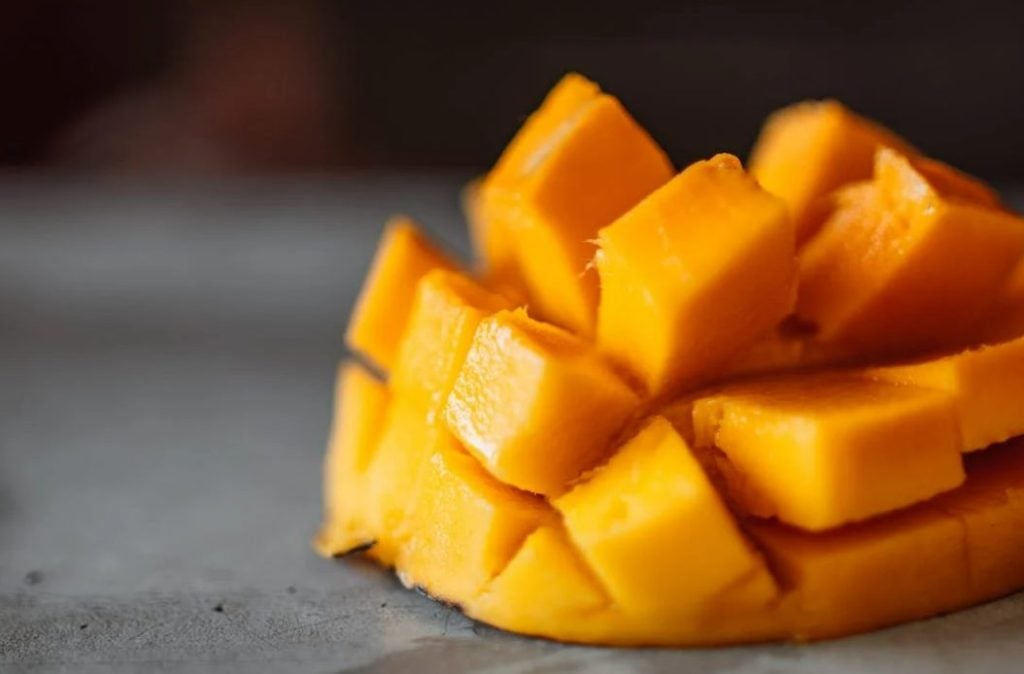
There are numerous flavors of fruit jellies, including strawberry, raspberry, and blueberry. Low in calories and a rich source of fiber and micronutrients, they are an excellent option for weight management.
How Fruits Can Aid Weight Management and Prevent Chronic Illness
Including fruits in your snacking routine can aid in weight management and preventing chronic diseases. Low in calories and rich in fiber, fruits can help you feel full and content. This can aid in preventing overloading and weight management. Additionally, fruits are loaded with antioxidants, which can help protect against chronic diseases such as cancer, heart disease, and diabetes.
Tips for Incorporating Fruits into Your Snacking Routine
Incorporating fruits into your snacking routine is easy and convenient. Here are some suggestions to get you started.:
- Choose seasonal fruits that are readily available.
- Wash and cut your fruits ahead of time for easy snacking.
- Add fruits to your breakfast, lunch, or dinner.
- Use fruits as a topping for yogurt, oatmeal, or cereal.
- Pack fruits in your bag or purse for a healthy snack.
- Experiment with different fruits and recipes to keep things interesting.
Other Healthy Snacking Options to Consider
While fruits are an excellent option for healthy snacking, other healthy options exist. Some of these include:
- Nuts and seeds
- Vegetables and hummus
- Greek yogurt
- Hard-boiled eggs
- Whole-grain crackers and cheese
Overcoming Common Barriers to Healthy Snacking
While snacking on fruits and other healthy foods can be beneficial, some common barriers can make it challenging. Some of these include:
- Lack of preparation and planning
- Convenience and accessibility of unhealthy snacks
- Limited availability of fresh and inexpensive fruits and vegetables
- Personal taste preferences
To overcome these barriers, it’s essential to plan, make healthy snacks readily available, and experiment with different fruits and recipes to find what works best for you.
Brittany Corporation’s Condominiums in Baguio: Embracing a Healthy and Balanced Lifestyle
While you savor the goodness of healthy snacking fruits, imagine owning a luxurious haven in the heart of Baguio. Brittany Corporation presents a unique opportunity to own a luxury condominium in Baguio, where sophistication and natural beauty intertwine.
These exquisite luxury condos offer a retreat from the bustling city, providing a serene haven amidst Baguio’s breathtaking landscapes. Imagine waking up to cool mountain breezes and panoramic views, knowing that every comfort and convenience is at your fingertips.
Each luxury condo in Baguio is meticulously crafted to exude elegance and style, featuring spacious layouts, premium finishes, and top-of-the-line amenities. From cozy units perfect for couples to expansive residences ideal for families, there is a condominium for sale that caters to your unique lifestyle and preferences.
Discover the joy of owning a luxury condominium in Baguio, where you can embrace a healthy and balanced lifestyle. Take advantage of the exclusive facilities such as a well-equipped fitness center, rejuvenating spa, jogging paths, and landscaped gardens where you can immerse yourself in nature’s beauty.

Baguio, known as the “City of Pines,” offers not only a cool climate but also an abundance of fresh produce. Explore the vibrant local market and indulge in a variety of healthy snacking fruits. From succulent strawberries to tangy oranges and crisp apples, Baguio’s fruit selection will delight your taste buds and nourish your body.
Immerse yourself in the charm of Baguio’s natural beauty and savor the goodness of healthy snacking fruits while enjoying the comforts of your luxury condo. Whether you seek a serene weekend getaway or a permanent residence, a condominium in Baguio provides the perfect blend of tranquility and refined living.
Do not miss the opportunity to own a luxury condominium in Baguio and immerse yourself in the beauty of the city. Embrace a lifestyle of sophistication and wellness amidst the stunning landscapes and abundant healthy snacking options in Baguio.
Final Words
Incorporating fruits into your snacking routine is a simple and effective way to boost your health. Fruits are packed with essential vitamins, minerals, fiber, and antioxidants that our bodies need to function optimally. They are also low in calories and water content, making them an ideal snack for weight management. You can improve your overall health and well-being by choosing fruits for snacking while satisfying your sweet tooth. So next time you feel snacky, reach for a piece of fruit and enjoy its numerous health benefits.
Suggested Read: Swiss Food To Enjoy At Your Crosswinds Condo
Suggested Read: How To Make Your Own Luxury Graze Box
Suggested Read: Home Activities That Burn Calories
Suggested Read: The Amazing Benefits Of Brown Rice
Suggested Read: A Sweet & Healthy Life
The mouthwatering roasted pig Lechon is one of the Philippines’ most beloved and famous dishes. It holds a special place in Filipino cuisine and culture, often being the star of celebrations and gatherings. While cities throughout the country are renowned for their lechon, this article will focus on the must-try lechon options available in Metro Manila, the bustling capital region of the Philippines.
Lechon: One of the Philippines’ Most Famous Food
Before we dive into the lechon scene in Metro Manila, let’s briefly discuss what makes lechon so special and why it is considered the Philippines’ famous food. Lechon is a whole pig meticulously prepared and roasted over an open fire. The result is a crispy, golden-brown skin encasing succulent and tender meat infused with flavors from various seasonings and spices.
Lechon is not just a dish but a centerpiece that brings people together. It is a symbol of abundance, festivity, and hospitality in Filipino culture. From birthdays and weddings to fiestas and holidays, lechon graces the dining tables, making any occasion more memorable.
Cebu City: Philippine City Known for Their Famous Lechon
Lechon Cebu is renowned for its distinct taste and preparation method. It’s characterized by its perfectly roasted skin, resulting in a delectable crunch with each bite. The flavors are carefully infused into the meat, creating a juicy and savory experience. For a classic and unforgettable lechon experience, Lechon Cebu is a top choice.
Metro Manila’s Lechon Scene
While Cebu is often associated with the best lechon in the Philippines, Metro Manila also boasts several establishments that offer exceptional lechon experiences. Here are some must-try lechon options in the city:
1) Elar’s Lechon
Elar’s Lechon is a household name in Metro Manila when it comes to lechon. Established in 1945, Elar’s has been serving delectable lechon for generations. Their lechon is known for its crispy skin, flavorful meat, and perfectly balanced seasoning. Elar’s also offers lechon belly, a boneless and marinated version of the traditional whole lechon.
2) Pepita’s Kitchen
Pepita’s Kitchen, headed by the renowned lechon expert Dedet dela Fuente-Santos, is famous for its “Lechon de Leche.” This specialty lechon is made from suckling pigs, producing incredibly tender meat. Pepita’s Kitchen offers unique flavors such as Truffle Lechon and Cebu Lechon, allowing lechon enthusiasts to explore exciting variations.
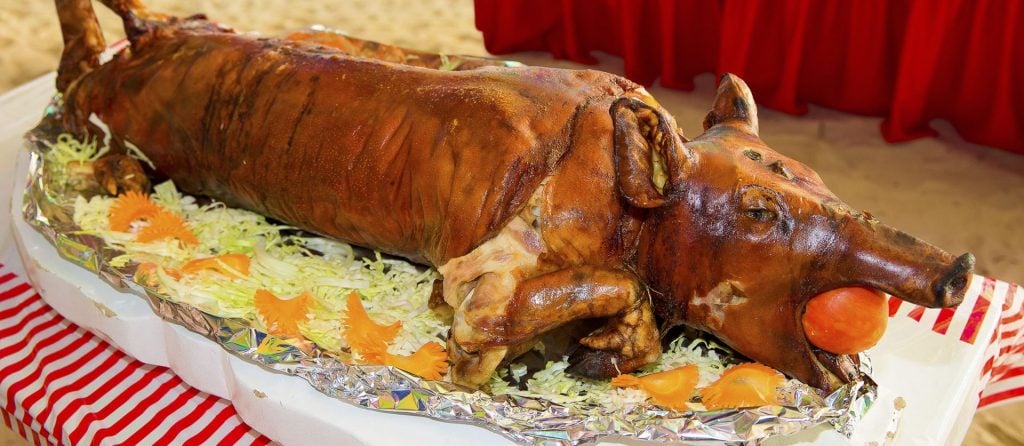
3) Rico’s Lechon
Rico’s Lechon started as a small stall in Cebu and has now expanded to Metro Manila. They pride themselves on using only organic and locally sourced ingredients for their lechon. Rico’s Lechon offers original and spicy flavors catering to different tastes. Their lechon is known for its crispy skin, flavorful meat, and delightful aroma.
4) Tatang’s Extra Crispy Boneless Lechon
Tatang’s Extra Crispy Boneless Lechon is a go-to place for those who prefer boneless lechon. Their lechon is characterized by its crispy skin and juicy, well-seasoned meat. Tatang’s also offers different sizes, making it suitable for small gatherings and larger feasts.
Exploring Different Types of Lechon
Choose a Kind of Lechon Based on Size and Weight
When selecting a lechon for your gathering, it’s essential to consider the size and weight that best suits your needs. Lechon is available in various sizes, from small to extra-large, to accommodate different groups and appetites. Knowing the number of guests, you’ll be serving will help you determine the perfect lechon size.
Celebrate in Style: A Whole Lechon for Large Gatherings
1) Rico’s Lechon
When celebrating momentous occasions with grandeur, a whole lechon steals the show. Rico’s Lechon offers a whole lechon that will impress your guests and make your event memorable. The presentation alone is a feast for the eyes, and the flavors will leave everyone raving about the delicious lechon.
2) Sabroso Lechon
Sabroso Lechon takes pride in its flavorful lechon, made with love and dedication. Their Lechon is a crowd-pleaser, perfect for large gatherings and celebrations. Each slice offers a delectable combination of crispy skin and tender meat, ensuring that every guest will be satisfied.
3) Hukad: Cebu Lechon Belly
Hukad is a popular restaurant that offers a variety of Filipino dishes, including their famous Cebu lechon belly. The lechon belly at Hukad is a true culinary delight. It captures the essence of Cebu’s lechon tradition and delivers a mouthwatering experience with every bite. Celebrate in style with Hukad’s Cebu lechon belly.
Classic and Flavorful: Lechon Served on a Bilao
General’s Lechon: Cochinillo Original
General’s Lechon is known for its Cochinillo Original, a classic lechon dish served on a bilao. This traditional presentation adds a touch of nostalgia to your lechon experience. The Cochinillo Original is a masterpiece, with its tender meat and crispy skin. Both the sight and the taste buds will be delighted by it.
Negros-Style Flavored Lechons
Negros is famous for its flavorful lechons, known for their unique marinades and seasonings. Explore the home of Negros-style flavored lechons and indulge in the distinct tastes and aromas that this region has to offer. Each bite will transport you to the culinary paradise of Negros.
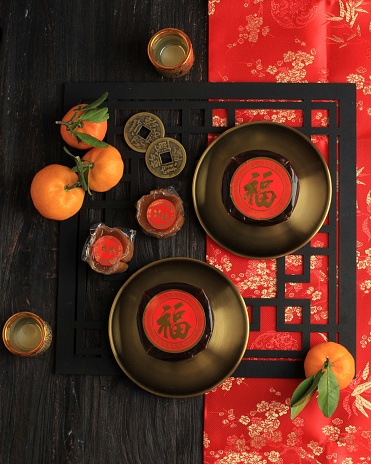
LEchon from Manila, The Capital of the Philippines
Manila, the bustling capital of the Philippines, is also home to some of the finest lechon establishments. Discover the lechon capital of Manila and uncover the hidden gems that serve mouthwatering lechon. Immerse yourself in the vibrant food scene and savor the flavors that make Manila a lechon destination.
Best for Intimate Gatherings: Lechon Options
For smaller gatherings and intimate celebrations, there are lechon options that cater specifically to your needs. Whether it’s a lechon belly or a smaller-sized lechon, these establishments offer the perfect solution for creating memorable moments with your loved ones.
Brittany Corporation in Baguio: Where Sophistication and Natural Beauty Intertwine
While savoring the best lechon in Manila, imagine owning a slice of paradise in the heart of Baguio. Brittany Corporation presents a unique opportunity to own a luxury condominium in Baguio, where sophistication and natural beauty intertwine.
These luxurious condos offer a haven of tranquility and elegance, providing a sanctuary amidst Baguio’s picturesque surroundings. Imagine waking up to panoramic mountain views and fresh pine-scented air, knowing that every comfort and convenience is at your fingertips.
Each luxury condo in Baguio is meticulously designed with impeccable craftsmanship, stylish interiors, and top-notch amenities. From cozy units perfect for couples to spacious residences ideal for families, there is a condominium for sale that suits your unique needs and preferences.
Discover the joy of owning a luxury condominium in Baguio, where you can experience a life of leisure and relaxation. Take advantage of the exclusive facilities and services, such as a well-equipped fitness center, soothing spa, swimming pool, and 24/7 concierge service. Unwind in the tranquility of the lush gardens or host memorable gatherings in the elegantly designed function rooms.
Baguio offers not only a peaceful retreat but also a vibrant culinary scene that tantalizes the taste buds. Indulge in the flavors of the city, from the sizzling lechon to the rich and comforting Pinoy delicacies. With the best lechon in Manila just a short drive away, you can satisfy your cravings for gastronomic delights.
Experience the charm of Baguio and its delectable cuisine while enjoying the comforts of your luxury condo. Whether you seek a weekend getaway or a permanent residence, a condominium in Baguio offers the perfect blend of urban convenience and serene mountain living.
Do not miss the opportunity to own a luxury condominium in Baguio and immerse yourself in the beauty of the city. Embrace a lifestyle of sophistication and tranquility amidst the stunning landscapes and culinary delights of Baguio.
Final Words
Lechon is an iconic Filipino dish that has captivated the hearts and palates of many. In Metro Manila, diverse lechon options cater to different preferences and occasions. From the classic Lechon Cebu to the flavorful lechon belly, each bite offers a taste of culinary excellence. Whether celebrating a special event or satisfying your cravings, these 13 places will guide you to the best lechon in the metro.
Suggested Read: Davao Japan Flights Might Be Coming Soon
Suggested Read: Must Try Secret Menu In Ruined Project
Suggested Read: Benefits Of Living In Baguio 2023
Suggested Read: Top Michelin Star Graded Dishes
Suggested Read: How To Host An Online Party
Edible Garden Design Ideas to Boost Production and Beautify Your Space
Creating an edible garden is a wonderful way to grow fresh produce while beautifying your outdoor space. Whether you have a spacious backyard or a small balcony, designing your edible garden thoughtfully can maximize productivity and add aesthetic appeal to your surroundings. Here are some ideas to inspire your edible garden design:
What is Basic Edible Gardening?
Basic edible gardening involves cultivating edible plants that can be harvested for consumption. It includes growing herbs, vegetables, and fruits that suit your climate and growing conditions. The primary focus is providing sunlight, water, and nutrients to support healthy plant growth.
How Do You Start an Edible Garden?
Starting an edible garden is an exciting journey. Begin by choosing a suitable location for your garden. Consider areas that receive at least six hours of sunlight daily. Whether you have a backyard, a balcony, or a small patio, make the most of the available space to grow your plants.
The Basics of Edible Garden Design
When designing your edible garden, there are a few key factors to consider. First, think about where you should make your garden. Look for areas with sufficient sunlight, good drainage, and easy access for watering and maintenance. Assess the available space and choose the appropriate gardening techniques accordingly.
Make the Most of Vertical Height with Hanging Baskets
If you have limited space, maximize your growing area using vertical height. Hang baskets or wall-mounted planters to grow herbs, trailing vegetables, and even compact fruit varieties. This approach saves space and adds visual interest to your garden.

How Do You Plan an Edible Landscape?
When planning an edible landscape, consider the layout and arrangement of your plants. Group plants together based on their water and sunlight requirements. Create pathways and designated areas for different crops. This makes maintenance easier and adds structure and organization to your garden.
Herbs and Vegetables for Edible Landscaping
Incorporate a variety of herbs and vegetables into your edible landscape design. Choose plants that offer both culinary and aesthetic value. For example, plant colorful Swiss chard or kale as decorative elements, and include fragrant herbs like basil, rosemary, and thyme that can be used in your cooking.
Grow Vegetables in Pots
If you have limited garden space, don’t worry! You can grow vegetables in pots and containers. Choose containers of suitable size and depth for each vegetable. This allows you to move the pots around to optimize sunlight exposure and create a flexible garden layout.
Using Natural Materials Like Wood, Stone, Plastered Cement, or Metal Create an Organic Feel for Any Edible Landscape Design
To add a natural and organic feel to your edible garden, incorporate wood, stone, plastered cement, or metal. Use these materials for raised beds, pathways, or decorative elements. They blend well with the surrounding plants and create a harmonious and inviting atmosphere.
Embrace Grafted Fruit Trees to Maximize Space
Grafted fruit trees are an excellent choice for small gardens. These trees have multiple fruit varieties grafted onto a single rootstock, allowing you to enjoy a variety of fruits from one tree. By embracing grafted fruit trees, you can maximize space and enjoy the flavors of different fruits in your garden.
Make It Special – Embrace the Design
Don’t be afraid to incorporate your style and creativity into your edible garden design. Add decorative elements like garden art, colorful plant markers, or trellises for climbing plants. Let your garden reflect your unique taste and make it a special place to enjoy and relax.
Grow Crops That Offer Rich Rewards
Consider growing crops that offer rich rewards in taste, nutrition, and productivity. Choose varieties known for their exceptional flavor or unique characteristics. Focus on high-yield vegetables like tomatoes, peppers, beans, or leafy greens that provide a bountiful harvest throughout the growing season.
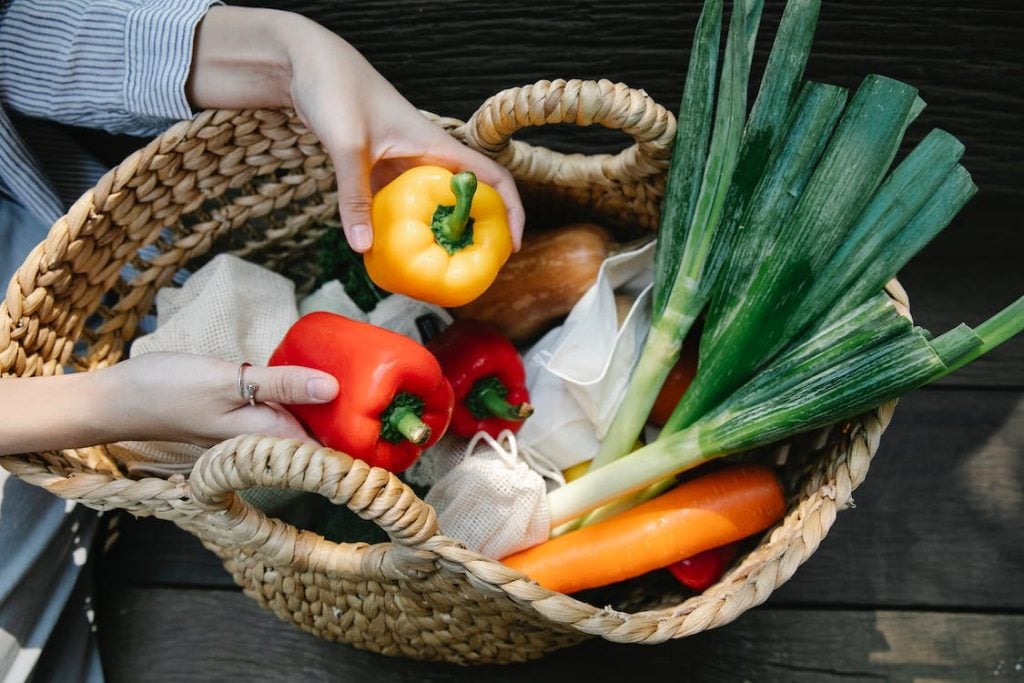
Types of Pot Containers + Edging Around Garden
Explore different types of pot containers to add variety and visual interest to your garden. Use ceramic pots, terracotta containers, or recycled materials like wooden crates or barrels. Additionally, consider adding edging around your garden beds using stones, bricks, or decorative borders to define the space and create a polished look.
Plant by Height with the Step System: High – Low – Flow
For an organized and visually appealing garden, follow the step system of planting by height. Place taller plants at the back or center, medium-sized plants in the middle, and shorter plants at the front or along the edges. This creates a flowing and layered effect that enhances the overall aesthetic appeal of your garden.
What are the Best Crops to Plant in an Edible Garden?
The best crops to plant in an edible garden depend on your preferences, local climate, and growing conditions. Consider popular choices like tomatoes, cucumbers, lettuce, herbs, strawberries, and peppers. Research suitable varieties for your region and select crops that thrive in your specific microclimate.
Plant Herbs, Crops, and Flowers Together
Create a harmonious and diverse garden by intermingling herbs, crops, and flowers. This practice, called companion planting, can help deter pests, attract beneficial insects, and improve pollination. For example, plant marigolds to deter pests, basil to enhance the flavor of tomatoes, or nasturtiums to repel aphids.
Look to Vertical Vegetable Garden Ideas to Save Space
Vertical vegetable gardens are an excellent option for maximizing space. Utilize trellises, stakes, or vertical planters to grow climbing vegetables like beans, peas, or cucumbers. This saves ground space and adds an interesting vertical element to your garden design.
Front Yard Garden Strategy
Consider incorporating edible plants into your front yard garden. Use raised beds or designated areas to grow vegetables, herbs, and flowers. This beautifies your front yard and allows you to showcase your edible garden to neighbors and passersby.
Plant a Small Vegetable Garden Amongst Flowers
Integrate a small vegetable garden amidst your flower beds or ornamental plants. This blending of edible and non-edible plants adds visual interest and creates a dynamic garden. Mix colorful lettuces, herbs, or compact vegetable varieties with flowers like marigolds or pansies for a vibrant and productive space.
Incorporate Seating Into Your Landscape Design
Create a cozy and inviting atmosphere in your edible garden by incorporating seating areas. Add benches, chairs, or even a small patio to relax and enjoy the fruits of your labor. It provides a perfect spot to unwind, entertain guests, and fully appreciate the beauty of your edible garden.
Grow Fruit Trees in Containers
If you lack space for traditional fruit orchards, consider growing fruit trees in containers. Select dwarf or compact varieties that are suitable for container gardening. You can enjoy homegrown fruits, such as citrus, apples, or figs, with proper care and maintenance, even in small spaces.
Remember, designing an edible garden is a creative and personal process. Tailor your garden to suit your preferences, available space, and local conditions. Experiment with different ideas, adapt them to your needs and enjoy the journey of creating a productive and visually stunning edible garden.

Brittany Corporation’s Luxury Lots in Daang Hari: Where You Experience Both Seclusion and Accessibility
Imagine waking up every morning to the picturesque beauty of nature, where the vibrant colors of your edible garden blend seamlessly with the elegance of your luxury house and lot in Metro Manila. At Daang Hari/Forresta, developed by the renowned Brittany Corporation, this dream becomes a reality.
Luxury lots in Daang Hari offer an exquisite lifestyle like no other, combining the convenience of metropolitan living with the serenity of nature. Nestled in the heart of Alabang, these exclusive properties provide a tranquil escape from the hustle and bustle of the city while remaining just a stone’s throw away from its vibrant energy.
The meticulously designed Daang Hari subdivisions offer a haven for nature enthusiasts and gardening aficionados alike. With expansive lots, you’ll have ample space to create your own edible paradise, where you can grow an array of organic vegetables, aromatic herbs, and flavorful fruits. Picture yourself strolling through your bountiful garden, handpicking the freshest ingredients to elevate your culinary creations. Your home becomes more than just a dwelling—it becomes a sanctuary of health, wellness, and gastronomic pleasure.
Beyond the verdant landscapes and edible gardens, these luxury houses from Brittany Corporation showcase impeccable craftsmanship and sophisticated design. From the grand façade to the smallest details within, no expense has been spared in creating an atmosphere of opulence and elegance. These homes exude luxury and embody a refined lifestyle that befits the discerning taste of their owners.
In addition to the stunning houses and edible gardens, the location of Daang Hari/Forresta offers a host of amenities and conveniences. Situated near Alabang, you’ll have access to premier shopping centers, renowned schools, world-class hospitals, and a myriad of recreational facilities. Experience the best of both worlds—seclusion and accessibility—right at your doorstep.
Are you ready to embark on a journey where luxury living and the delights of nature intertwine? Discover the luxury lots in Daang Hari and let your edible garden flourish amidst an oasis of sophistication. Embrace the exceptional lifestyle that awaits you in Alabang, Philippines.
Final Words
In conclusion, creating an edible garden is not only a practical way to grow your food but also an opportunity to enhance the beauty of your outdoor space. You can design a productive and visually appealing edible garden by incorporating the above ideas.
Start by understanding the basics of edible gardening and choose a suitable location for your garden. Maximize vertical space with hanging baskets, utilize pots and containers for growing vegetables, and embrace natural materials to create an organic feel. Consider grafted fruit trees to optimize space and grow crops that offer rich rewards in taste and productivity.
Plan your garden layout by grouping plants based on their needs and incorporating elements like pathways and seating areas. Explore companion planting and vertical gardening techniques to save space and add visual interest. Don’t forget to incorporate your personal style and make your edible garden unique and special.
Whether you have a small balcony or a spacious backyard, there are numerous possibilities to create an edible garden that provides fresh produce and becomes a beautiful and inviting outdoor oasis. So roll up your sleeves, dig into the soil, and start designing your edible garden today!
Suggested Read: Condo Gardening: 10 Household Items To Get You Started
Suggested Read: Edible Garden To Make Your Home Pretty And Healthy
Suggested Read: Gardening Ideas For Your Home Open Space
Suggested Read: The Where And Why Of Vertical Living
Suggested Read: Vertical Garden And Its Benefits
As more and more people turn to cycling as a healthier and more environmentally-friendly mode of transportation, the demand for bike-friendly routes and destinations in Metro Manila has soared.
Whether you’re a seasoned rider or a newbie looking to explore the city on two wheels, here’s a list of Metro Manila’s top 10 bike spots that cater to recreational and utilitarian cyclists. So, gear up, grab your helmet, and let’s pedal our way through the city!
University of the Philippines Diliman (Quezon City)
A Picturesque Campus Ride
The University of the Philippines Diliman in Quezon City provides a lovely and secure ride around its sizable academic oval. This 2-kilometer loop is ideal for a relaxing ride or a demanding workout thanks to designated lanes for biking and jogging, century-old acacia trees offering plenty of shade, and lush foliage. Cycling and jogging on the academic oval are much more delightful on Sundays when motorized traffic is prohibited.
Expand Your Route
You can continue your bike trip to the so-called Heartbreak Hill and Science Complex, located farther east of the university, for those who want to explore outside the academic oval.
Marikina River Park (Marikina)
A Riverside Ride with a View
One of the nation’s biggest sports and entertainment areas is Marikina River Park, which is situated in the country’s shoe capital and has 11 kilometers of bike tracks running along both sides. The park is a great place for riding, running, skating, and camping and is well-known for its picturesque ambiance and sizable picnic areas.
The park comes alive at night as a thriving nightlife destination with bars, restaurants, cafes, and nightclubs surrounding the riverbanks.
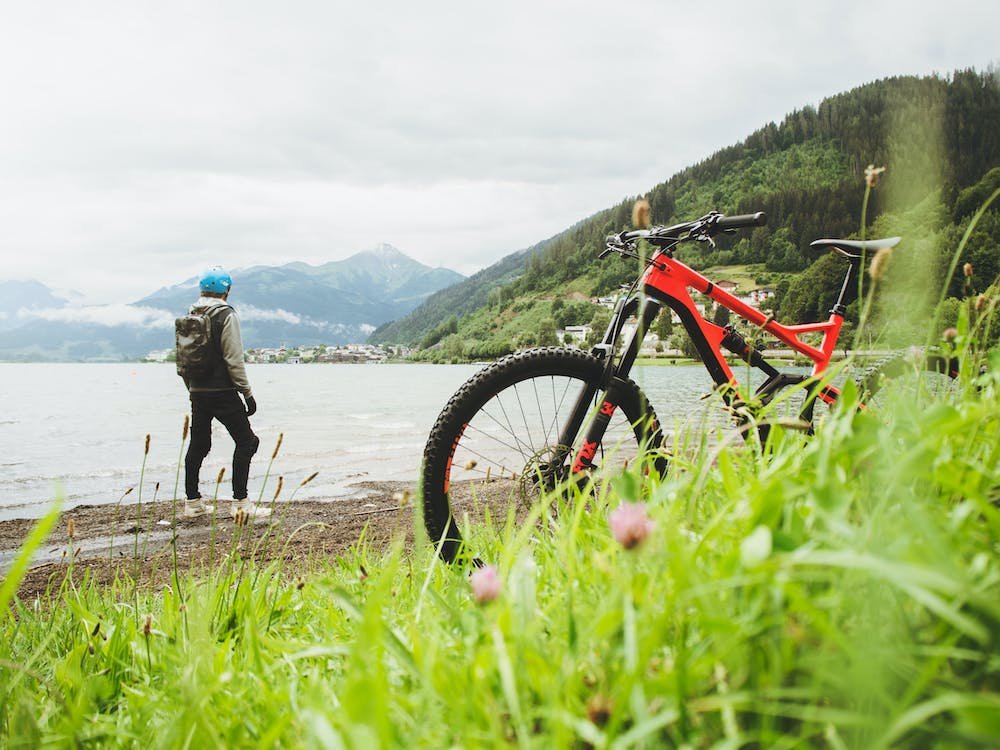
La Mesa Nature Reserve (Quezon City)
A Green Oasis in the Heart of the City
The well-maintained eco-park La Mesa Nature Reserve in Quezon City provides a unique green sanctuary in Metro Manila. There are various hiking and biking paths within the reserve, home to the La Mesa Dam, one of Metro Manila’s three main water sources.
For those seeking to escape the city’s concrete jungle, the La Mesa Nature Reserve is a must-visit location. It offers man-made single tracks and routes designed for beginners and intermediate-level bikers.
C-6 Bike Lane (Taguig)
The Longest Bike Lane in the Philippines
The 5.8-kilometer-long, 3-meter-wide C-6 Bike Lane runs across Laguna Lake, the largest lake in the Philippines, in Taguig City. The first of its type on a Philippine roadway, this protected bike lane provides cyclists with a fun and safe ride.
The C-6 Bike Lane, which connects Lower Bicutan in Taguig City to Taytay, Rizal, offers bikers in Metro Manila an alternate route to EDSA and C5.
Bonifacio Global City (BGC, Taguig)
A Commercial Hub with Bike-Friendly Roads
A thriving commercial district in Taguig City called Bonifacio Global City (BGC) has bike-friendly roadways and designated bike lanes on 2nd Avenue, 11th Avenue, 28th Street, 30th Street, and Rizal Drive. Also, bike racks are available to keep your two-wheeler safe while visiting local businesses.
Every Sunday along 31st Street next to Track 30th Park, the National Bicycle Organization gives cycling training for beginners to those aged nine and up. The Kiddie Wheely also offers children a place to bike outside.
Heroes Bike Trail (Taguig)
A Versatile Training Ground
The Heroes Bike Trail, located within the spacious compound of the Libingan ng Mga Bayani cemetery in Taguig City, caters to riders of all skill levels. With various elevations and courses, this sports complex is perfect for both newbies seeking a safe training ground and experienced riders seeking a challenging playground.

Quezon Memorial Circle (Quezon City)
A Family-Friendly Ride
The Quezon Memorial Circle, located in the heart of Quezon City, is a family-friendly bike spot featuring a wide pedestrian lane perfect for bikers, joggers, and walkers. With its well-maintained grounds, lush greenery, and various recreational facilities, this park is ideal for weekend bonding activities with family and friends.
Rizal Park (Luneta, Manila)
A Historic Ride
Rizal Park, or Luneta, is a historic urban park in Manila. Its wide pathways, beautiful gardens, and iconic monuments offer a unique biking experience for those looking to learn about the country’s history while enjoying a leisurely ride. The park also has bike racks and a dedicated bike rental facility for visitors’ convenience.
Mall of Asia (MOA) Seaside Boulevard (Pasay City)
A Scenic Coastal Ride
Boasting a picturesque view of Manila Bay, the Mall of Asia (MOA) Seaside Boulevard in Pasay City is a popular destination for cyclists seeking a relaxing ride along the coast. With its well-paved roads, dedicated bike lanes, and ample parking spaces, this seaside boulevard offers a safe and enjoyable cycling experience.
What is the longest bike lane in the Philippines?
The Laguna Lake Highway Bike Lane, which covers a sizable area, proudly claims to be the country’s longest bike lane. This long bicycle route offers riders an exceptional experience by fusing scenic beauty, leisure activities, and environmentally friendly transportation.
Cycling enthusiasts have a dedicated and well-maintained road for their bicycling experiences thanks to the Laguna Lake Highway Bike Lane, which runs the length of the Laguna Lake Highway. It offers adequate opportunities for riders to explore and take in the area’s natural beauty because it is longer than other bike lanes nationwide.
Bicyclists are treated to spectacular vistas of the expansive Laguna Lake as they travel along the Laguna Lake Highway Bike Lane. The calm waters, encircled by lush vegetation and picturesque surroundings, create a pleasant and lovely environment for an enjoyable cycling adventure.
Where to Bike in South of Metro Manila: Exploring Biking Routes
South Metro Manila offers many biking opportunities for cycling enthusiasts and those looking to explore the region on two wheels. Whether you’re a beginner or an experienced cyclist, there are various biking routes and destinations worth exploring in this vibrant part of the Philippines. In this article, we will highlight some of the popular biking spots in South Metro Manila.
Daang Hari Bike Lane
The Daang Hari Bike Lane is another well-traveled riding path in South Metro Manila. This dedicated bike lane, which runs along Daang Hari Road in Las Pias and Muntinlupa City, offers riders a comfortable and enjoyable riding experience. Wide roadways along the route make it convenient for both leisurely and brisk cycling.
The Daang Hari Bike Lane is outfitted with visible signs and dedicated rest places for riders’ convenience and comfort. Along the path, cyclists can enjoy the picturesque views of the well-kept and lovely surroundings.

Nuvali Bike Trails
1) Main Nuvali Loop
The primary cycling route in Nuvali is the Main Nuvali Loop, which spans slightly over 19 kilometers. Starting from Solenad, riders follow Nuvali Boulevard, passing the roundabout and continuing until they reach the T-intersection with Diversity Avenue. At this point, cyclists have the option to turn right, leading them to Miriam College Nuvali, and enjoy a gentle 3.38-kilometer descent back to Diversity Avenue, near Republic Wake Park.
Alternatively, riders can turn left at the T-intersection, heading towards Republic Wake Park, and ascend towards Miriam College from the opposite direction.
2) Carmelray Business Park
For those seeking to train with their time trial or triathlon bikes, the neighboring Carmelray Industrial Park offers an ideal location. Riders can park at The Strip, a commercial complex within the area. The cycling route along Wisdom Avenue is notably flat, providing an excellent opportunity to enhance time trial and triathlon riding skills. The road’s northern end is exposed to crosswinds, creating an additional challenge for cyclists who desire real-world training conditions.
3) Revpal Climb
For cyclists looking to test their climbing abilities, the renowned Revpal or Reverse Palace climb awaits just beside Nuvali. The name “Palace” refers to Tagaytay City’s Palace in the Sky and People’s Park in the Sky, where the climb concludes.
The ride commences with a manageable segment, starting from Solenad Mall and rolling towards Canlubang Golf and Country Club. Before reaching the club, riders take a right turn onto a short yet steep curving road that ascends to the abandoned mansion of former dictator Ferdinand Marcos. Cyclists can find makeshift stores near the mansion where they can refuel and relax.
After the short gravel road beyond Marcos Mansion, riders who prefer not to push themselves can return to Nuvali. However, the real climb begins from this point for those seeking a challenge. This segment features an average gradient of 4%, with slopes steepening up to 33% as the climb progresses.
Upon reaching the peak of the Revpal climb, cyclists will encounter the appropriately named All Is Well restaurant. There, they can savor rice meals and indulge in the special Bulalo, providing a sense of contentment.
The entrance to People’s Park in the Sky becomes visible a short distance away. Cyclists can turn right and descend back to Nuvali via the Sta. Rosa-Tagaytay road. The gentle slopes of this route make it easier to control the bike during the descent.
Brittany Corporation’s Sta. Rosa Estate: Where Sophistication Meets Tranquility
As you venture through the scenic bike routes of Santa Rosa Laguna, imagine returning to the lap of luxury within the beautiful Santa Rosa Estate. Brittany Corporation presents an exclusive opportunity to own a luxury house and lot in Sta. Rosa, where sophistication meets the tranquility of nature.
Nestled amidst Laguna’s lush greenery and captivating beauty, these luxury houses and lots offer a remarkable blend of elegance and serenity. Imagine coming home to a sanctuary of opulence, where every detail has been meticulously crafted to provide a life of utmost comfort and style.
The luxury house and lot options in Sta. Rosa Laguna showcase architectural brilliance, spacious interiors, and high-quality craftsmanship. These homes are designed to elevate your living experience and provide an oasis of luxury within reach. From grand entrances to expansive living spaces, each residence exudes a timeless charm that complements the breathtaking surroundings.
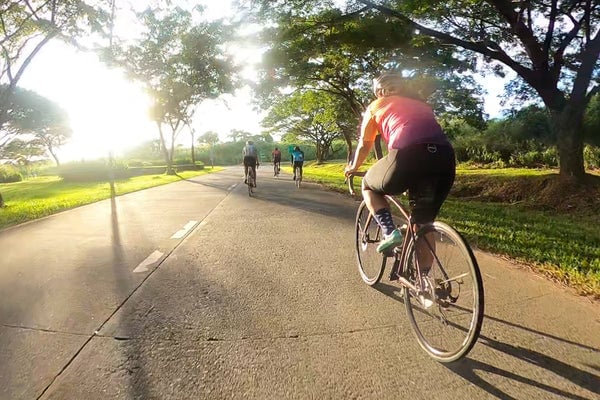
While Santa Rosa Estate is renowned for its luxurious houses, it also offers a limited selection of premium lots for sale in Laguna. If you desire to create your dream home from scratch, these spacious lots provide a blank canvas for your imagination to flourish. Build the perfect abode that reflects your unique style and vision amidst the tranquility and beauty of Santa Rosa.
Aside from the allure of Santa Rosa Estate, its proximity to Nuvali adds a layer of convenience and excitement. Located just a stone’s throw away, Nuvali is a bustling hub offering a myriad of dining, entertainment, and recreational options. You can easily access world-class amenities, premium shopping centers, and top-notch educational institutions, ensuring that every aspect of your lifestyle is catered to.
With Santa Rosa Laguna as your backdrop and Nuvali as your playground, you can truly experience the best of both worlds. Embark on exhilarating bike rides along the scenic routes, explore the vibrant surroundings, and return to the comfort and luxury of your Santa Rosa Estate home.
Ready to embark on an extraordinary journey of luxury and nature? Explore the available luxury houses and lots in Sta. Rosa Laguna, and seize the opportunity to create the home of your dreams. Discover the epitome of luxurious living in Santa Rosa, Laguna, where beauty, comfort, and elegance seamlessly intertwine.
Final Words
The best way to discover Manila’s hidden beauties and stay active at the same time is to go biking. There are bike trails in Manila for every skill level, from easy to difficult. So grab your helmet, ride your bike, and pedal your way around the city.
Suggested Read: Ideal Bicycle For Your Preferred Location
Suggested Read: Green Lanes For Strategic Improvement
Suggested Read: 6 Bicycle Brands You Should Consider
Suggested Read: Best Bike Trails In The South
Suggested Read: Daang Hari Biking Routes
Adopting energy-efficient techniques at home is more vital than ever in this day and age of rising environmental concerns and energy expenses.
We can make a positive impact on the environment and save money in the process if we all make an effort to use less energy.
Home energy efficiency is a shared duty for a better tomorrow.
Using energy-efficient lighting, appliances, insulation, smart thermostats, water conservation measures, and even renewable energy sources can have a major impact on reducing energy consumption and lowering our carbon footprint.
In addition to helping the planet, being green can help you save money, make you more comfortable, and enhance your quality of life.
Let us make these adjustments, mindful that our combined efforts can transform the world into a better, more sustainable place for future generations.
One of the best way to become energy efficient is to own a sustainable glass house.
Glass houses, which are notable for their see-through construction and attractive aesthetics, have seen a recent surge in popularity in the field of contemporary architecture.
However, the enormous glass surfaces that they have present unusual obstacles in terms of energy efficiency and the influence they have on the environment.
It is crucial to combine new design techniques and technologies that decrease energy consumption and promote environmental friendliness in order to construct sustainable glass houses.
This is one of the most important steps in the process.
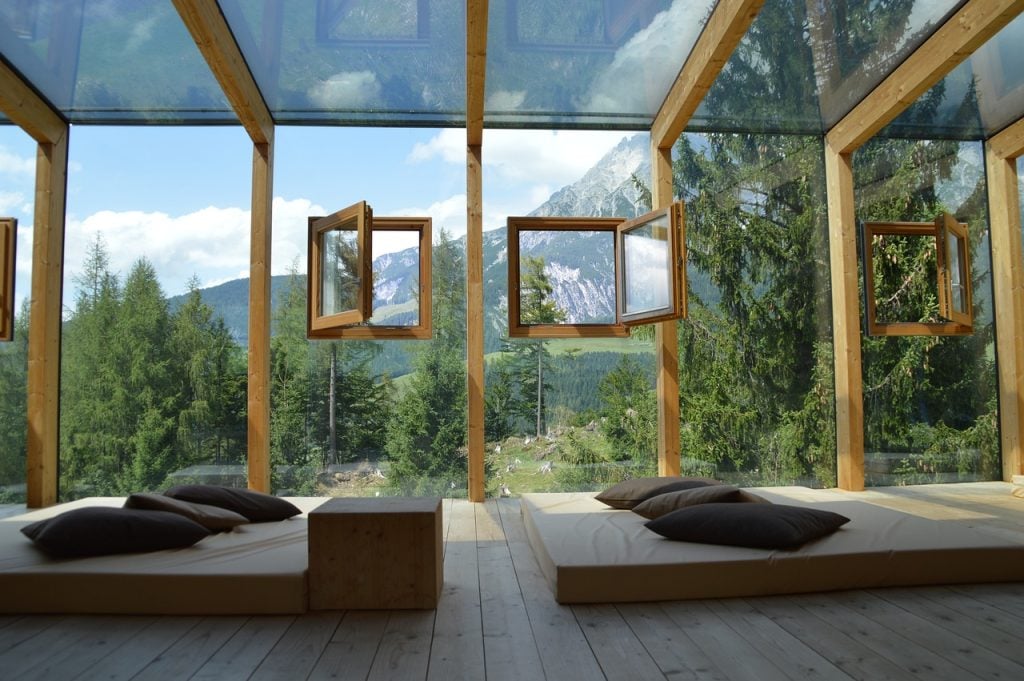
We will investigate several aspects of environmentally responsible architecture in glass houses, focusing on essential principles such as passive solar design, efficient insulation, integration of renewable energy sources, and the utilization of eco-friendly materials.
Through the implementation of these strategies, glass houses are able to lessen their impact on the environment, cut down on the amount of energy they use, and foster a more harmonic connection between the built environment and the natural world.
Passive Solar Design
The use of passive solar design principles into the construction of energy-efficient glass houses is an essential step.
These methods make use of the sun’s energy to heat and cool the interior rooms, thereby decreasing the need for mechanical support.
The following are some important things to keep in mind:
1. Orientation and Layout
Glass houses should be positioned to maximise solar exposure, with the long axis pointing south in the northern hemisphere.
This will allow the most amount of sunlight to enter the structure.
It also allows for the greatest amount of solar gain during the winter months while allowing for the least amount of direct sunlight during the summer months.
2. Positioning of Windows and Shading
It is possible to regulate the amount of heat gained or lost from the sun by strategically positioning and shading windows.
The windows that face south ought to be enlarged so as to make the most of the sunlight that is available during the winter, whilst the windows that face east and west ought to have their sizes lowered or be shaded so as to prevent the building from being too hot.
3. Thermal Mass
The incorporation of materials inside the glass house that have a large thermal mass, such as concrete or stone, can collect and store heat energy during the day and then release it at night, so stabilizing the temperatures inside the building.
4. Sealing and Weatherstripping
Methods that are utilized correctly for weatherstripping and sealing help to avoid air leakage, which is a factor that can contribute to energy loss. It is necessary to have seals of a high grade around windows, doors, and any other openings.
Efficient Insulation
Insulation that works as intended is essential for decreasing the amount of heat that is transferred through the glass surfaces, cutting down on energy usage, and keeping the inside at a pleasant temperature. Considerations such as the following are necessary for effective insulation:
1. Insulating Glazing
Double or triple glazing with low-emissivity coatings and insulating gas fills can greatly boost the insulating qualities of glass, hence minimizing heat loss or gain. Insulating capabilities of glass can be significantly enhanced by the use of insulating glazing.
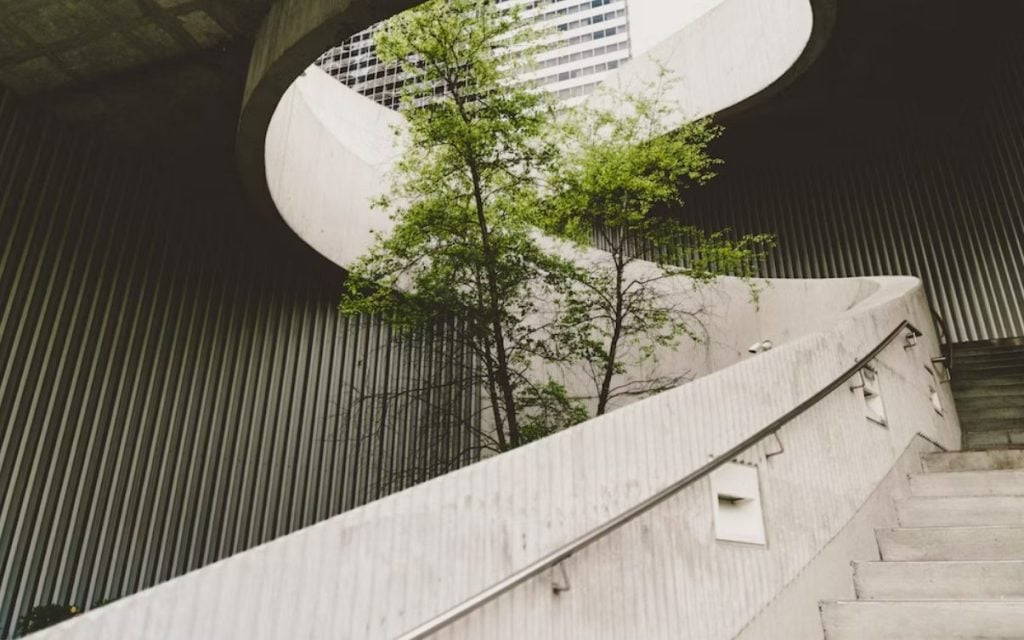
2. Insulated Frames
The use of insulated frames around windows and doors, which include thermal breaks and insulating materials such as PVC or wood with low thermal conductivity, helps to limit the amount of heat that is transferred.
Integration of Renewable Energy Sources
Adding glass homes with integrated renewable energy sources would further boost the sustainability of these structures.
These alternative energy sources can be used in addition to or even in place of conventional energy sources, which will result in a smaller negative impact on the environment and lower costs over the long term.
Among the most important alternatives for integrating renewable energy are:
1. Solar photovoltaics (PV)
The glass house is able to generate clean electricity from the abundant sunlight by mounting solar panels on the roof or in other suitable locations.
Batteries are a great place to store excess energy, or it can be sent back into the grid.
2. Solar Water Heating
Solar energy can be used to power water heating systems by utilizing solar thermal collectors. This lessens a system’s dependency on traditional forms of energy and saves money.
3. Wind Turbines
In locations that have enough wind conditions, it may be possible to incorporate into the design of the glass home a small-scale wind turbine that can generate electricity.
Materials that are Good for the Environment
It is vital, in order to reduce the environmental impact of glass houses, to choose materials that are sustainable and environmentally friendly.
Taking into account the following factors while selecting eco-friendly materials:
Low-Emissivity (Low-E) Glass
Choosing low-emissivity (low-e) glass can assist lower the amount of heat transferred, which in turn improves energy efficiency.
In addition, lowering the demand for raw materials is accomplished by utilizing recycled glass or glass that contains a high percentage of recycled content.
Sustainable Framing Materials
Selecting frames made of wood that comes from managed forests or aluminum that has been recycled will help reduce the negative impact on the environment that is caused by the construction of glass houses.
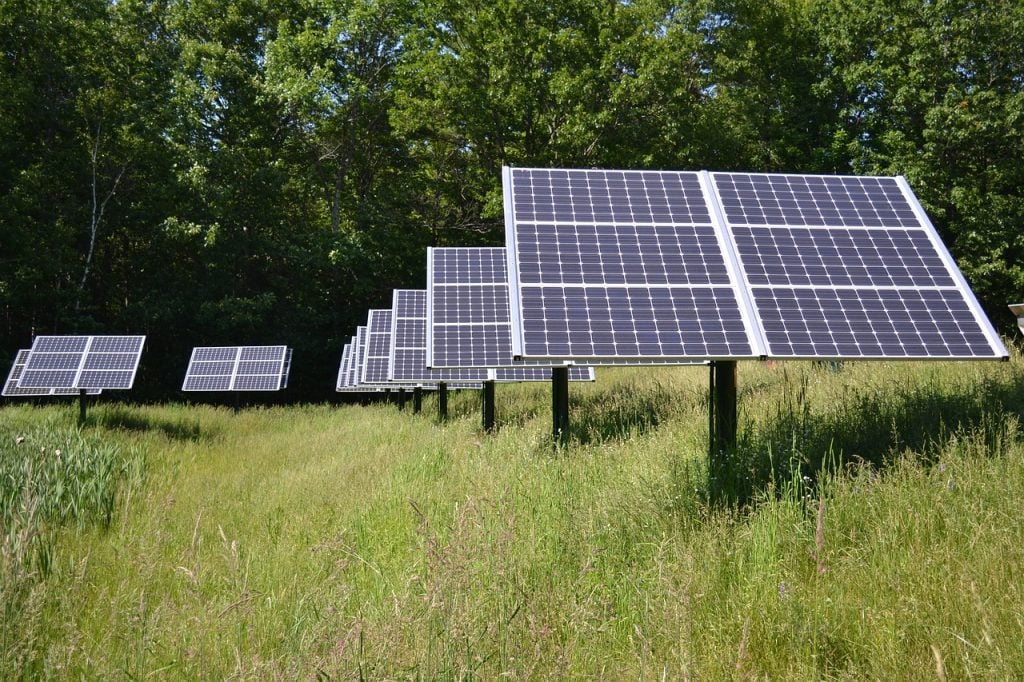
Insulation Materials
Using insulation materials that are less harmful to the environment, such as cellulose or sheep’s wool, can help minimize the amount of embodied energy and environmental impact that a structure has.
A holistic strategy, which takes into consideration passive solar design, efficient insulation, integration of renewable energy sources, and the use of ecologically acceptable materials, is required for the construction of glass houses that are energy efficient and friendly to the environment.
A glass house can achieve sustainable performance by implementing these concepts, which will result in a reduction in both their carbon footprint and their energy use.
A closer connection between the inhabitants of glass houses and their natural surroundings can also be fostered by the glass houses’ seamless incorporation into their respective natural settings.
However, it is essential to be aware that sustainable design is a continuing process.
To further increase the environmental friendliness of glass houses, it is required for architects, engineers, and manufacturers to engage in continual research, innovation, and collaboration.
We are able to develop glass houses that reflect our commitment to a greener future by adopting these concepts and working towards sustainable solutions.
These residences will highlight the beauty of design while also honoring our commitment.
Build a Susatainable Glass House in Vista Alabang
Within the sprawling and picture-perfect Vista Alabang neighborhood, which is well-known for its Italian-style allure and dedication to the art of luxury living, there is a growing interest in environmentally friendly housing options that compliment the enduring beauty of the building.
Imagine a sustainable glass house that blends in perfectly with the picturesque streetscape of Vista Alabang.
Inside, families would be able to enjoy the splendor of an Italian way of life while also embracing environmentally friendly methods.
Not only do these contemporary houses provide residents a one-of-a-kind way to live, but they also make significant contributions to the general health and wellbeing of the surrounding community thanks to the energy efficiency and see-through facades that they boast.
Vista Alabang can expand its vision to offer residents the opportunity to live in harmony with nature by embracing sustainable design principles.
This will foster a sense of love for the environment and a commitment to a greener future.
With a house by Vista Alabang that is a sustainable house and made of glass, you are able to create a house that is not only beneficial to the environment, but as well as aesthetically pleasing.
Suggested Read: Smart Home And Glass House: What It Brings To The Table
Suggested Read: Sustainable Design That Won’t Ruin Your Home’s Charm
Suggested Read: Insulation Guide For Energy-Efficient Luxury Homes
Suggested Read: Guide To Having Solar-Powered Homes
Suggested Read: Sustainability In Glass House
In countries like the Philippines, Spanish colonialism is evident through the structures. Spanish home design, also known as Spanish Revival or Spanish Colonial Revival, is characterized by its warm and inviting aesthetic influenced by the architectural styles of Spain, particularly from the regions of Andalusia and Catalonia.
What defines Spanish design is simple to determine. You just have to look into some special key elements. Keep on reading this article to can incorporate this style in your home.
What are the characteristics of a Spanish style homes?
While to some countries and regions, there are different aspects considered as what defines Spanish design depending on the historical period of influence there are still some general characteristics that you can incorporate to achieve a Spanish-inspired interior.
-
Thick Walls
Homes built in the Spanish architectural style frequently have thick walls composed of adobe, stone, or concrete. Due to the insulation provided by these substantial walls, the interior is kept cool and comfortable even in hot temperatures.
-
Hand-Painted Tiles
“Azulejos,” or decorative tiles, are frequently used in different areas of Spanish-style homes. Intricate patterns and vivid colors are frequently hand-painted on these tiles, bringing a burst of visual appeal to kitchens, baths, and stairwells.
-
Wrought Iron Details
Another feature of homes built in the Spanish architectural style is decorative wrought ironwork. Objects like stair railings, window grilles, gates, and light fixtures are made of wrought iron. A touch of refinement and visual intrigue are added by intricate motifs and patterns.
-
Stucco Walls Exterior
Spanish-style homes typically have exterior walls finished with stucco, a durable and low-maintenance material. The stucco walls are often painted in earthy tones such as white, cream, beige, or terracotta, reflecting the warm Mediterranean climate.
These are just some of the key features that you may notice as what defines Spanish design. If you are looking for a home inspiration that perfectly shows what defines Spanish design, you may look into Brittany Santa Rosa to find the perfect Spanish-style homes!
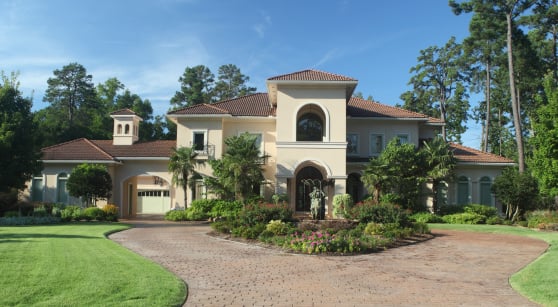
What defines Spanish design in an Interior?
Now that you have known the common exterior features of Spanish homes, the list below are features of what defines Spanish design in terms of the interior design. So if you are planning to turn your home inspired from Spanish-style homes, take note of the following:
-
Clay Tile Flooring
Traditional Spanish homes often have clay or terracotta tile flooring, which adds a rustic and earthy feel to the space. The tiles can be plain or decorated with colorful patterns. Clay tiles can be used in various areas of the home, including entryways, kitchens, bathrooms, and living spaces. They can also be used for outdoor patios and courtyards, blending the indoor and outdoor living areas seamlessly.
-
White Plastered Walls
White plastered walls contribute to the clean, bright, and timeless aesthetic of an interior design, including Spanish-style homes. They provide a blank canvas for personalization and allow other elements in the room to shine. Occasionally, textured or stucco walls with curved edges are also seen. Textured finishes can be achieved by applying the plaster in a way that creates subtle or pronounced patterns and variations. Smooth finishes involve carefully troweling the plaster to create a seamless and uniform surface.
-
Exposed Ceiling Beams
Wooden ceiling beams are a common feature in Spanish home design specifically in its interior design. Exposed ceiling beams draw the eye upward, adding depth and architectural interest to a room. They can visually break up a large ceiling expanse and create a sense of coziness and intimacy in a space. These beams can be left in their natural state or stained in darker shades to add warmth and contrast to the white walls.
-
Arches and Niches
Arches and niches are architectural details that are frequently found in Spanish interiors. Arched doorways, windows, and built-in niches add a sense of elegance and charm to the space. Arches can be found both indoors and outdoors. In Spanish-style homes, they may be used to frame entrances, separate rooms, or create architectural transitions between different areas of the house.
While niches can serve as focal points within a room, adding depth and visual interest to the space. They break up the flatness of the wall surface and create an architectural detail that draws attention. It also offers an opportunity to highlight and display decorative objects, such as artwork, vases, religious artifacts, or family heirlooms. Lighting fixtures can be incorporated into the niches to enhance the visual impact of the displayed items.
-
Ironwork
Wrought iron is commonly used in Spanish exterior and interior design for various purposes, such as stair railings, light fixtures, and window grilles. Intricate ironwork adds a touch of authenticity and enhances the overall aesthetic. Wrought iron is known for its decorative details, which often include scrollwork, floral motifs, twisted bars, and geometric patterns. These intricate designs contribute to the overall aesthetic appeal and create visual interest in the space.
-
Decorative Tiles
Another distinct interior design feature this home style are its tiles. Spanish tiles, particularly colorful ceramic or hand-painted tiles known as “azulejos,” are widely used as accents in kitchens, bathrooms, and other areas. They are often featured as backsplashes, decorative borders, or on stair risers.
-
Fireplaces
Spanish homes interior design often include a fireplace as a focal point in the living room or gathering spaces. These fireplaces are typically made of stone or adobe and may feature decorative tile work. While traditional Spanish-style fireplaces are prevalent, modern interpretations of Spanish architecture may incorporate contemporary and streamlined fireplace designs. These designs can still embrace the essence of Spanish style while adapting to contemporary preferences.
-
Dark Wood Furniture
Spanish interior design favors furniture made from dark, richly stained woods, such as walnut, mahogany, or oak. Spanish-style homes often incorporate rustic wood furniture pieces that showcase natural wood grains and textures. Carved details, distressed finishes, and wrought iron accents are frequently incorporated into furniture pieces, adding character and authenticity to the space.
-
Textured Fabrics
To add warmth and texture, Spanish-style interior design incorporates textiles such as heavy curtains, tapestries, embroidered cushions, and rugs made from natural fibers like wool or jute. These textiles often feature vibrant colors and intricate patterns. When using textured fabrics in interior design, it’s important to consider the overall style and aesthetic of the space. Mixing and layering different textures can create a visually dynamic and engaging environment, while also providing a tactile experience that enhances the comfort and coziness of the room.
-
Decorative Accents
Spanish homes are known for their decorative accents. Spanish-style homes interior design often display artwork and wall decoration that reflects the cultural heritage and artistic traditions. Paintings, tapestries, mirrors with ornate frames, and metal wall art featuring Spanish motifs can be used to adorn the walls and create focal points. Another is the Spanish pottery, such as Talavera. It is renowned for its vibrant colors and intricate hand-painted designs. These pottery pieces, including vases, plates, and bowls, can be used as decorative accents on shelves, mantels, or tabletops, adding a pop of color and a touch of cultural heritage.
These decorative accents contribute to the overall charm, warmth, and authenticity of Spanish-style homes. They bring together cultural influences, craftsmanship, and artistic expression, creating a unique and inviting atmosphere.

Living the Spanish Dream with Pontevedra Estate
Now that you have distinguished what defines Spanish design, you must be very interested in purchasing a property with a timeless architectural beauty. Here’s where you can find one.
In the center of Santa Rosa City, Pontevedra Estate combines history, culture, and elegance with interconnected lanes and plazas and enchanting squares bustling with cafes and innovative restaurant concepts. Your new Spanish home awaits!
Suggested Read: Creating An Oasis: Designing Spanish-Inspired Outdoor Spaces
Suggested Read: Traditional Spanish Decor: Tips For Achieving A Classic Look
Suggested Read: Guide To Modern Luxury Interior Design
Suggested Read: Colors Of A Rustic Spanish Style
Suggested Read: Bringing The Colors Of Spain
Learn about the top regions in the Philippines showing positive growth in 2022. From Western Visayas to SOCCSKSARGEN, we’ll explore these unique economies and cultures driving their growth. Join us as we discover the beauty and economic potential of these regions in the Philippines.
The Philippine economy is thriving like never before, and it’s showing up in the numbers.
The Philippine government’s proactive efforts to improve the business climate and attract more foreign investments have been instrumental in the country’s impressive economic growth. In 2022, the country experienced a significant increase of 7.6% compared to last year’s 5.7%, with all the major industries showing a positive bottom line.
The current administration has also adopted and strengthened the “Build, Build, Build” from the previous initiatives. It has allocated significant funds for building new roads, bridges, airports, and other infrastructure projects. These developments have improved the country’s transportation and communication systems, making it easier for businesses to operate and expand.
As we anticipate how will our economy perform this year, it’s worth taking a closer look at the regions across the Philippines experiencing positive growth. The economies of 17 regions are showing impressive progress and are worth watching as we move forward.

Top Performing Regions In The Philippines
The Philippine Statistics Authority (PSA) recently posted the fastest growth in the economic growth of different regions in the country, and the results are impressive. Western Visayas recorded the highest economic growth rate of 9.30% in 2019, followed by the Cordillera Administrative Region (CAR) with 8.70% and Davao Region with 8.15%. Other regions with impressive economic growth rates include Central Luzon, Bicol Region, Cagayan Valley, Calabarzon, Central Visayas, and Ilocos Region.
The growth is attributed to various factors, such as the thriving tourism industry, growth in the services sector, investments in infrastructure development, and growth in the agriculture, forestry, and fishing sectors.
Another report from PSA also shows that Western Visayas topped the regional economies in the country with an impressive per capita growth rate of 8.4 percent, followed by the Cordillera Administrative Region at 7.8 percent, Bicol Region at 7.1 percent, and Cagayan Valley at 7.0 percent.
Regarding industry performance, Food Service Activities have the fastest growth at 32.1%, followed by Other Services at 28.4% and Transportation and Storage at 23.9%. The increasing demand for food delivery, personal care, repair and maintenance services, transportation, and storage has led to the growth in this sector.
All Regions in the Philippines
Ilocos Region
The Ilocos region, or Region I, is located in the northwest part of Luzon and comprises four provinces: Ilocos Norte, Ilocos Sur, La Union, and Pangasinan. The region is known for its stunning beaches, historical landmarks, and delicious cuisine. The major industries in the region are agriculture, fisheries, and tourism. Ilocos is famous for its tobacco, corn, and rice production, as well as its salt and fish sauce production. The region is also home to popular tourist destinations such as Vigan, Laoag, and Pagudpud.
Cagayan Valley
Also known as Region II, this region is located in the northeastern part of Luzon and comprises five provinces: Batanes, Cagayan, Isabela, Nueva Vizcaya, and Quirino. The region is known for its rich biodiversity, stunning landscapes, and vibrant culture. The major industries in the region are agriculture, mining, and tourism. Cagayan Valley is known for its rice, corn, and tobacco production and mining of gold, copper, and limestone.
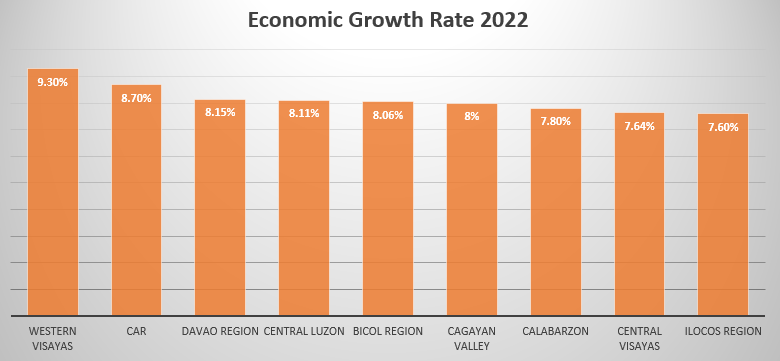
Central Luzon
Region III is located in the central part of Luzon and comprises seven provinces: Aurora, Bataan, Bulacan, Nueva Ecija, Pampanga, Tarlac, and Zambales. The region is known for its historical landmarks, delicious cuisine, and thriving economy. The major industries in the region include agriculture, manufacturing, and tourism. Central Luzon is known for its rice, sugarcane, and corn production, as well as its manufacturing of electronics, textiles, and food products.
CALABARZON
Region IV-A is located in the southern part of Luzon and comprises five provinces: Cavite, Laguna, Batangas, Rizal, and Quezon. The region is known for its stunning beaches, beautiful mountains, and rich history. The major industries in the region include manufacturing, services, and agriculture. CALABARZON is known for its manufacturing of electronics, automotive parts, and garments, as well as its rice, coconut, and coffee production.
MIMAROPA
Region IV-B is located in the southern part of Luzon and comprises five provinces: Occidental Mindoro, Oriental Mindoro, Marinduque, Romblon, and Palawan. The region is known for its pristine beaches, diverse marine life, and rich culture. The major industries in the region include agriculture, fisheries, and tourism. MIMAROPA is known for its production of rice, coconut, and mango.
Bicol Region
Also known as Region V, this region is located in the southeastern part of Luzon and comprises six provinces: Albay, Camarines Norte, Camarines Sur, Catanduanes, Masbate, and Sorsogon. The region is known for its majestic Mayon Volcano, spicy cuisine, and vibrant festivals. The major industries in the region include agriculture, fisheries, and tourism. Bicol is known for its production of rice, coconut, and abaca, as well as its fishing industry and tourism-related businesses.
Western Visayas
Also known as Region VI, this region is located in the western part of the Visayas and comprises six provinces: Aklan, Antique, Capiz, Guimaras, Iloilo, and Negros Occidental. The region is known for its stunning beaches, delicious cuisine, and rich culture. The major industries in the region include tourism, agriculture, and fisheries. Western Visayas is known for its production of sugarcane, rice, and seafood, as well as its tourism-related businesses.
Central Visayas
Also known as Region VII, this region is located in the central part of the Visayas and comprises four provinces: Bohol, Cebu, Negros Oriental, and Siquijor. The region is known for its beautiful beaches, historic landmarks, and vibrant festivals. The major industries in the region include tourism, manufacturing, and agriculture. Central Visayas is known for its manufacturing of furniture, fashion accessories, and processed food products, as well as its sugarcane, coconut, and rice production.
Eastern Visayas
Also known as Region VIII, this region is located in the eastern part of the Visayas and is composed of six provinces: Biliran, Eastern Samar, Leyte, Northern Samar, Samar, and Southern Leyte. The region is known for its stunning beaches, natural wonders, and rich culture. The major industries in the region include agriculture, fisheries, and tourism. Eastern Visayas is known for its rice, coconut, and abaca production, as well as its fishing industry and tourism-related businesses.

Zamboanga Peninsula
Also known as Region IX, this region is located in the western part of Mindanao and is composed of three provinces: Zamboanga del Norte, Zamboanga del Sur, and Zamboanga Sibugay. The region is known for its stunning beaches, diverse culture, and delicious cuisine. The major industries in the region include agriculture, fisheries, and tourism. Zamboanga Peninsula is known for its rice, rubber, and seaweed production, as well as its fishing industry and tourism-related businesses.
Northern Mindanao
Also known as Region X, this region is located in the northern part of Mindanao and comprises five provinces: Bukidnon, Camiguin, Lanao del Norte, Misamis Occidental, and Misamis Oriental. The region is known for its stunning landscapes, diverse culture, and vibrant festivals. The major industries in the region include agriculture, manufacturing, and tourism. Northern Mindanao is known for its production of rice, corn, and sugarcane, as well as its manufacturing of processed food products, furniture, and garments.
Davao Region
Also known as Region XI, this region is located in the southeastern part of Mindanao and comprises four provinces: Davao del Norte, Davao del Sur, Davao Oriental, and Davao Occidental. The region is known for its beautiful landscapes, diverse culture, and delicious cuisine. The major industries in the region include agriculture, mining, and tourism. Davao Region is known for its production of banana, coconut, and durian, as well as its mining of gold, copper, and nickel. Brittany Corporation caters to the Davaoeños with its luxury condominiums and world-class luxury real estate.
SOCCSKSARGEN
Also known as Region XII, this region is located in the southern part of Mindanao and comprises four provinces: Cotabato, Sarangani, South Cotabato, and Sultan Kudarat. The region is known for its stunning landscapes, diverse culture, and delicious cuisine. The major industries in the region include agriculture, mining, and tourism. SOCCSKSARGEN is known for its rice, corn, and rubber production and mining of gold, copper, and chromite.
CARAGA
Also known as Region XIII, this region is located in the northeastern part of Mindanao and is composed of five provinces: Agusan del Norte, Agusan del Sur, Dinagat Islands, Surigao del Norte, and Surigao del Sur. The region is known for its pristine beaches, diverse culture, and rich biodiversity. The major industries in the region include agriculture, mining, and tourism. Caraga is known for its production of rice, corn, and coconut, as well as its mining of gold, nickel, and chromite.
Bangsamoro Autonomous Region in Muslim Mindanao (BARMM)
Also known as BARMM, this region is located in the southern part of Mindanao and comprises five provinces: Basilan, Lanao del Sur, Maguindanao, Sulu, and Tawi-Tawi. The region is known for its rich culture, stunning landscapes, and vibrant festivals. The major industries in the region include agriculture, fisheries, and tourism. BARMM is known for its rice, corn, and seaweed production, as well as its fishing industry and tourism-related businesses.
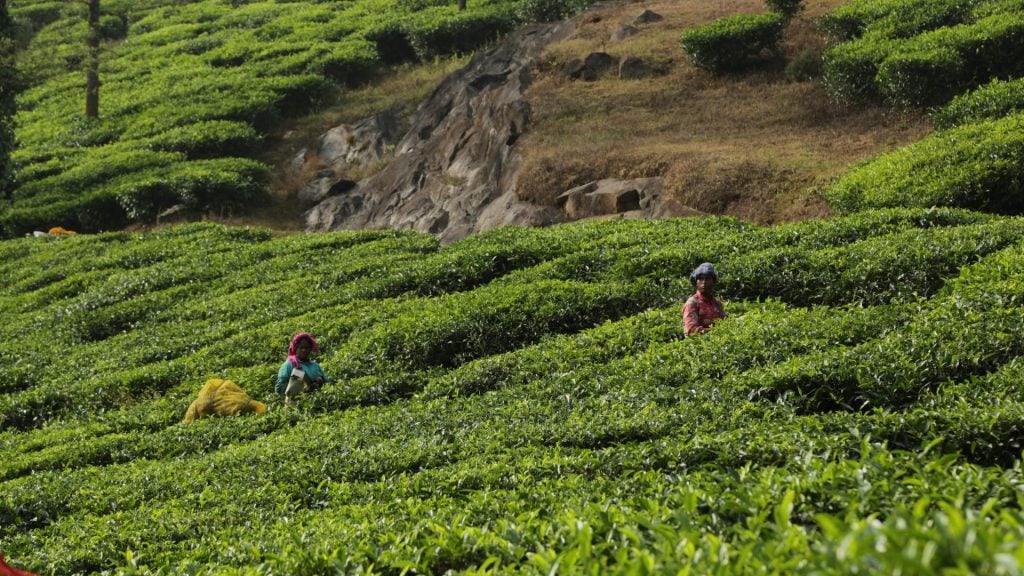
Cordillera Administrative Region (CAR)
Also known as CAR, this region is located in the northern part of Luzon and comprises six provinces: Abra, Apayao, Benguet, Ifugao, Kalinga, and Mountain Province. The region is known for its stunning landscapes, rich culture, and vibrant festivals. The major industries in the region include agriculture, mining, and tourism. Here you can find the beautiful City of Pines, where you can enjoy luxury condo such as Bern to experience Brittany Living.
National Capital Region (NCR)
Also known as Metro Manila, this region is located in the central part of Luzon and comprises 16 cities and one municipality. The region is known for its bustling economy, rich history, and vibrant culture. The major industries in the region include services, manufacturing, and finance. Metro Manila is known for its service-related businesses, manufacturing of electronics and garments, and finance-related businesses.
Final Thoughts
The Philippines boasts a rich diversity of regions, each with unique strengths and potential for growth. The fact that all 17 regions recorded positive growth in 2022 is a testament to the country’s concerted efforts toward consistent economic development and recovery.
By leveraging the strengths and potential of each region, the Philippines is poised for sustained growth and prosperity. The future looks bright for the country and its people, and we can anticipate even greater achievements in the coming years.
all regions in the Philippines
The Philippines is divided into 17 regions, each with its unique culture, history, and economy. These regions range from the bustling National Capital Region to the scenic Cordillera Administrative Region and the beautiful beaches of Central Visayas.
regions with positive growth in 2022
According to the Regional Accounts of the Philippines report by the Philippine Statistics Authority, all 17 regions recorded positive growth in 2022. Western Visayas had the fastest growth rate at 9.3%, followed by Cordillera Administrative Region (CAR) at 8.7% and Davao Region at 8.15%. Other regions with growth rates above the national level were Central Luzon, MIMAROPA, CALABARZON, and SOCCSKSARGEN.
Suggested Read: Major Dialects That Enrich The Filipino Language
Suggested Read: Davao Regional Development Plan 2023-2028
Suggested Read: Metro Manila Cost Of Living Remains Stable
Suggested Read: Why Seafood Feasts Are Popular In Davao
Suggested Read: Economic Effect Of Hybrid Rice
Looking for a new place to call home? Check out this article for the top PEZA locations to watch out for this year. Discover the various economic zones throughout the Philippines and learn about the advantages of locating in a PEZA zone.
Are you looking for a new place to live and work?
The Philippines has been making great strides in its economic development, especially in business and trade, which have seen significant growth since the pandemic.
Philippine Economic Zone Authority, or PEZA, is a Philippine government agency attached to the Department of Trade and Industry, created to promote investments in the export-oriented manufacturing industry in the country by assisting investors in setting up their business operations within selected areas called Special Economic Zones. PEZA assists foreign entities in facilitating the business operations of investors within the designated ecozones.
PEZA has recently approved P33B funding for 60 new and expansion projects, which is expected to create more than 7,400 direct jobs and generate $1.012 billion in exports. This approval was granted as of April 2023 and is a positive step towards the growth of the export-oriented manufacturing industry in the Philippines.
Whether you’re trying to start a new chapter or achieve your career goals, we can help you find the perfect location.

List of Economic Zones in the Philippines
The 107% increase in the Philippine Economic Zone Authority budget allocation is also a result of the President, Ferdinand “Bongbong” Marcos Jr.’s, initiatives to attract more foreign investments. As a result, businesses within special economic zones now need extra human resources to ease their operations.
The influx of direct foreign investments presents a unique opportunity for individuals seeking employment, as there is a higher demand for workers within these zones. You can also check PEZA online to see the complete list of the special economic zone (Philippines).
Aurora Special Economic Zone Authority (ASEZA)
The Aurora Special Economic Zone Authority (ASEZA), also known as Aurora Pacific Economic Zone (APECO), is located in Casiguran, Aurora. The ASEZA is next to equally beautiful provinces, including Isabela, Nueva Ecija, and Quirino.
The Aurora ecozone is located on the eastern seaboard of Luzon, making it an ideal location for businesses engaged in agro-industrial industries. The area is also known for its natural beauty, with beaches, waterfalls, and other tourist attractions that can be developed to boost the local tourism industry.
Through ASEZA, the Philippine government aims to attract domestic and foreign investments, generate employment opportunities, and promote economic growth in the region.
The agency is committed to providing a conducive environment for businesses to thrive while ensuring sustainable development and environmental protection. The four main industries in this economic zone include eco-tourism, agri-aqua, light industries, and online gaming.
Baguio City Economic Zone (BCEZ)
The special economic zones in the City of Pines is ideal due to its location and favorable business environment. Baguio City is known for its cool climate and scenic views, making it an attractive destination for tourists and investors.
The city also has a highly skilled workforce and a strong educational system, which provides businesses with access to a pool of talented professionals. Moreover, Baguio City is home to luxury real estate and high-end condominiums such as Bern, a testament to the city’s potential as a high-end market.
The BCEZ, part of the P33B project, will likely attract more businesses and employment opportunities to the area. The zone has over 40 locators specializing in textiles, apparel, electronics, plastic products, and other industries.
Bataan Export Processing Zone (BEPZ)
Bataan Export Processing Zone (BEPZ) is a 1,600-hectare industrial park in Mariveles, Bataan. BEPZ aims to attract foreign and domestic investments, generate employment opportunities, and promote regional economic growth.
Moving to BEPZ is ideal due to its excellent infrastructure and favorable business environment. The zone is situated near major seaports, airports, and highways, providing easy access to local and international markets.
BEPZ also offers a range of incentives and benefits to investors, including tax holidays, duty-free importation of capital equipment, and streamlined business registration procedures.
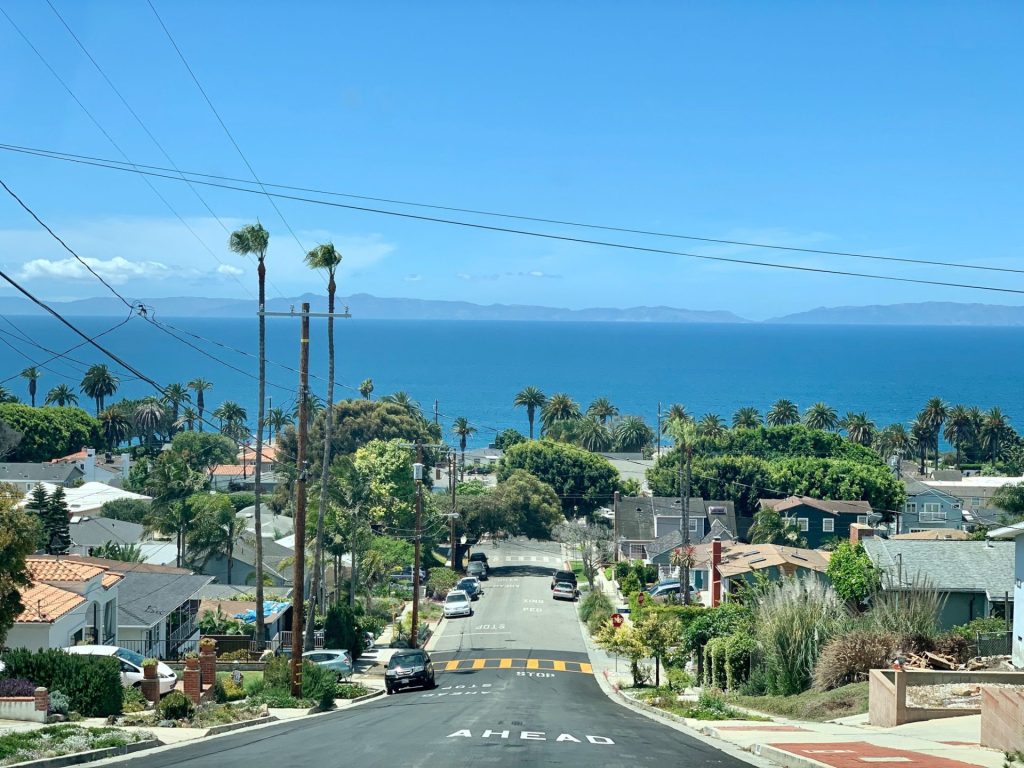
Cagayan Economic Zone Authority (CEZA)
Cagayan Economic Zone Authority (CEZA), or the Cagayan Freeport, was created to promote economic development in the Cagayan Valley region. CEZA can operate or license tourism-related activities, including gambling casinos, sports facilities, and racing events for horses and dogs.
If you enjoy living in hot climates, CEZA can be a good place to consider moving to. The area has a tropical climate, with temperatures ranging from 23 to 32 degrees Celsius throughout the year. The warm weather can be ideal for outdoor activities and the region’s natural beauty.
CEZA is situated in the northernmost part of the Philippines, making it an ideal place for businesses engaged in trade and commerce with other countries in the Asia-Pacific region.
Cavite Economic Zone (CEZ)
Cavite Economic Zone (CEZ) is a Special Economic Zone in Cavite, Philippines. The zone was established in 1995 and is home to more than 400 companies.
Moving near CEZ can offer several benefits, including access to job opportunities and a growing economy, improved infrastructure, and a favorable business environment that offers incentives and benefits to investors. It comprises around 680 acres of land and is just 30 kilometers from Manila.
The main industries in Cavite include manufacturing, electronics, and information technology. The manufacturing sector in Cavite produces a wide range of products, including automotive parts, electronics, and consumer goods. Additionally, the zone has a growing IT and business process outsourcing industry, which provides opportunities for skilled professionals.
One advantage of moving to CEZ is its proximity to Tagaytay, which has a number of world-class properties, including Crosswinds Tagaytay and Alpine Villas Tagaytay by Brittany Corporation.
Clark Freeport and Special Economic Zone (CFEZ)
Clark Freeport and Special Economic Zone (CFEZ) is located in Central Luzon, Philippines. The zone covers portions of the cities of Angeles and Mabalacat, portions of the town of Porac, and portions of Capas and Bamban in Tarlac.
Moving near CFEZ may offer several benefits, including access to job opportunities, improved infrastructure, investment opportunities, and a favorable business environment that offers incentives and benefits to investors. The zone has diverse industries, including manufacturing, aviation, logistics, and business process outsourcing.
CFEZ is home to several multinational companies, including Texas Instruments. The zone also has a growing tourism industry, with several attractions and activities available for visitors.
Mactan Economic Zone (MEZ)
One of the main benefits of living in Mactan is the access to world-class beaches and resorts. The island’s clear waters, white sand beaches, and stunning coral reefs make it an ideal destination for water sports enthusiasts and beach lovers.
Mactan has a thriving tourism industry that provides residents with job opportunities and diverse activities. Mactan also has a growing economy, with several industries, including manufacturing, electronics, and business process outsourcing.
The Mactan Economic Zone (MEZ) of Lapu-Lapu City is a special economic zone that provides incentives and benefits to investors. This has led to the development of several commercial and residential properties in the area, creating real estate opportunities for those looking to invest in the growing economy.
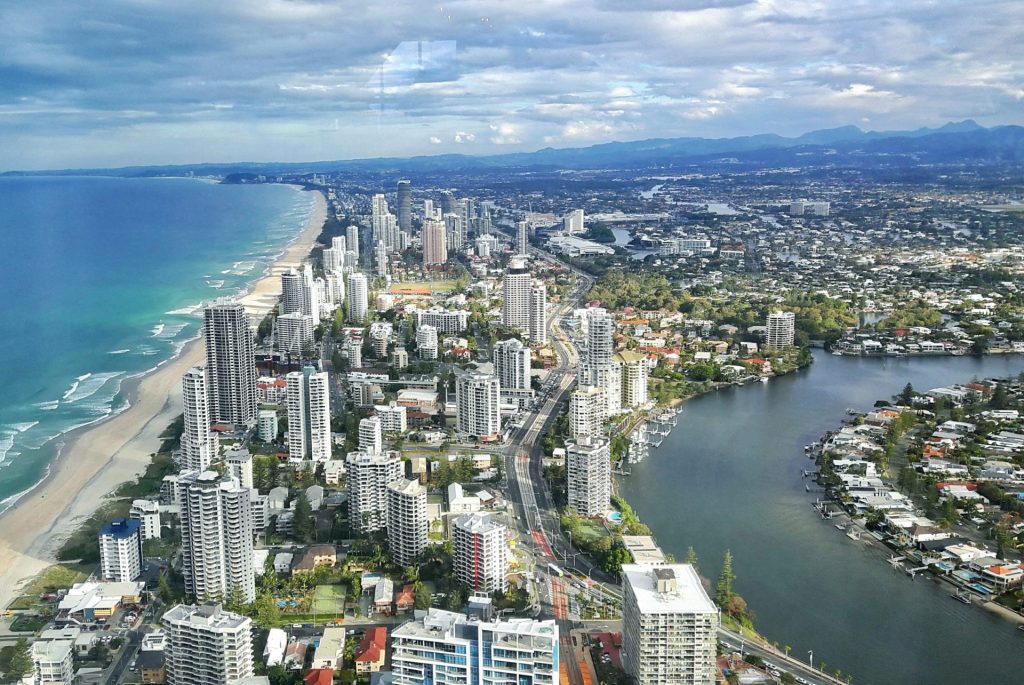
Pampanga Export Processing Zone (PEPZ)
Pampanga Export Processing Zone (PEPZ) is another special economic zone in Pampanga, Philippines. It is a hub for various industries, including electronics, manufacturing, and food processing.
Living near PEPZ can offer several benefits, including access to job opportunities, improved infrastructure, and a favorable business environment that offers incentives and benefits to investors.
The zone is located near major transportation hubs, including the Clark International Airport, making it an ideal location for businesses engaged in trade and commerce. Additionally, living near Philippine Economic Zone Authority provides access to a skilled workforce, with several technical and vocational schools providing training for various industries.
Subic Bay Freeport Zone (SBFZ)
Subic Bay Freeport Zone (SBFZ) is located in Zambales, Philippines. It was created in 1992 after the closure of the US Naval Base in Subic Bay. The 6700-hectare zone is managed by the Subic Bay Metropolitan Authority (SBMA).
SBFZ is a hub for various industries, including manufacturing, logistics, and tourism. The zone has diverse businesses, from small and medium-sized enterprises to multinational corporations. SBFZ offers several benefits to investors, including a favorable business environment, tax incentives, and access to a skilled workforce.
One of the major industries in SBFZ is manufacturing, with several companies engaged in electronics, automotive, and shipbuilding. The zone also has a growing logistics industry, with several companies engaged in warehousing, distribution, and transportation.
SBFZ was created to promote economic development in the region and provide job opportunities for the local population. The closure of the US Naval Base in Subic Bay led to the loss of thousands of jobs, and the creation of SBFZ aimed to fill that void. Today, SBFZ is a thriving economic zone, contributing to the growth of the Philippine economy.
Should You Move to a Special Economic Zone (Philippines)?
The key to making the most of your move to an Economic Zone Authority (PEZA) location is to know what you’re getting into and research the area before making decisions. In other words, consider the factors most important to you—things like cost of living, climate, job market, and housing options—and research potential areas that meet these criteria. Of course, we don’t want to add too much pressure here, but these variables are important considerations.
What are the advantages of locating in a PEZA economic zone?
Philippine Economic Zone Authority offers many advantages, including ease-of-doing business, world-class, environment-friendly facilities, fully secured area perimeter, adequate power and water supply, state-of-the-art telecommunications, ready-to-occupy standard factory buildings, wastewater treatment facilities, and computer security.
Suggested Read: Catalyst For Economic Development: Modern Industrial Parks
Suggested Read: Effects Of Importation To The Philippine Economy
Suggested Read: What Is The State Of Economy In Baguio
Suggested Read: NEDA: Everything You Need To Know
Suggested Read: How To Stay Stress-Free At Home
Explore the rise of eco-friendly resorts and sustainable tourism and learn about innovative design and renewable energy, conservation efforts, and community engagement initiatives shaping the future of travel. Join us in the movement towards responsible hospitality, preserving paradise for generations.
In recent years, a transformative shift has taken place in the hospitality industry, with eco-friendly real properties for sale, hotels, and sustainable tourism emerging as powerful catalysts for change.
As the Philippines’ awareness of environmental issues deepens, travelers seek experiences that provide relaxation and luxury and prove a commitment to preserving our planet’s natural wonders.
In the past, luxury often meant destruction to the environment. But now, more people who care about the planet are choosing comfortable and responsible travel. From the remote corners of tropical rainforests to pristine coastal havens, eco-friendly resorts are leading the charge by reimagining hospitality through the lens of sustainability.
Join Brittany Corporation as we discover the transformative power of eco-friendly resorts and sustainable tourism, where preserving paradise becomes a shared responsibility for present and future generations.
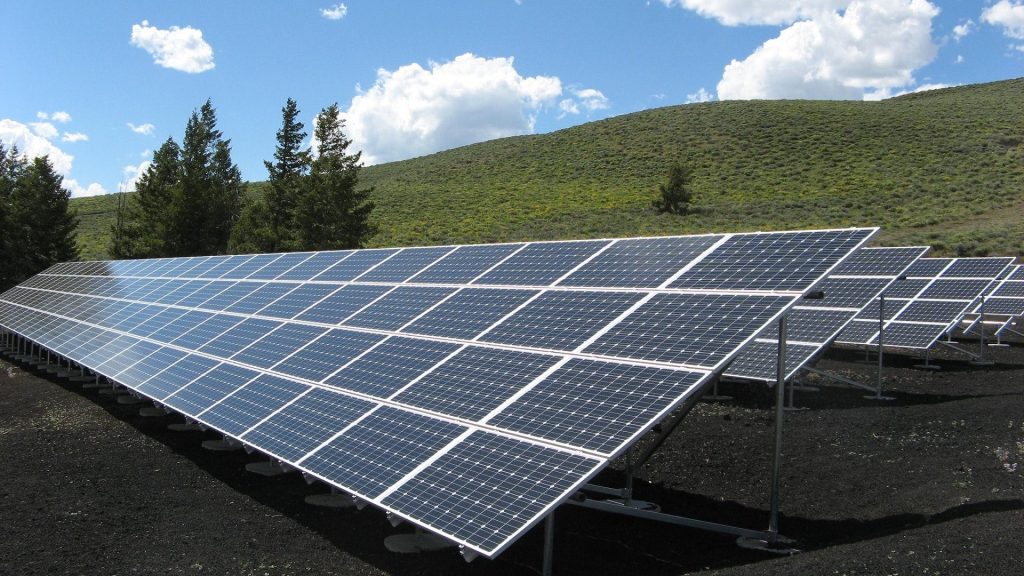
The impact of tourism on the environment
Tourism has a significant impact on the environment in the Philippines. The country’s natural attractions, such as beaches, coral reefs, and rainforests, are known for their world-class tourist destinations. Yet, the increase in tourism has also led to environmental issues such as pollution, habitat destruction, and loss of biodiversity.
The construction of hotels, resorts, and other tourism-related infrastructure has contributed to deforestation and soil erosion. It is important for the Philippines to put in place sustainable tourism practices to cut the negative impact on the environment and preserve its natural resources for future generations.
The benefits of sustainable tourism
Sustainable tourism aims to protect the environment, support local communities, and promote cultural heritage. In the Philippines, sustainable tourism has become an important initiative that has brought many benefits.
One of the main benefits of sustainable tourism in the Philippines is the preservation of natural resources by promoting eco-friendly practices and encouraging responsible tourism. This not only helps maintain the Philippines’ beauty for future generations, but it also provides economic benefits through tourism.
Another benefit of sustainable tourism in the Philippines is its support to local communities. Sustainable tourism creates job opportunities for people in remote areas, which helps to reduce poverty and improve the standard of living. Additionally, sustainable tourism, which promotes eco-friendly hotels, often involves working with local communities to preserve cultural heritage sites and traditions, which helps to promote cultural exchange and understanding.
There are two examples of sustainable tourism initiatives in the Philippines, such as the Tubbataha Reef Natural Park, a UNESCO World Heritage Site in the Sulu Sea. It is home to over 600 species of fish and 360 species of coral, making it one of the most diverse marine ecosystems in the world.
Another is the Masungi Georeserve, a conservation area in Rizal province, just outside Manila. The georeserve is home to a variety of plant and animal species, including unique geological formations. The Masungi Georeserve Foundation manages the area and has implemented sustainable tourism practices to protect the environment and support local communities.
Sustainability practices in eco-friendly resorts
Use of renewable energy sources
Eco-friendly hotels or resorts are increasingly adopting sustainability practices, which include the use of renewable energy sources. Renewable energy refers to sources of power that are replenished naturally, such as solar, wind, hydropower, geothermal, and biomass. These forms of energy are clean, non-polluting, and have a lower carbon footprint than traditional forms of power generation.

Conservation of water and energy
Eco-friendly resorts increasingly implement sustainability practices, including responsible water and energy conservation. This involves using and managing resources to cut waste and reduce environmental impact. Examples of conservation practices include the installation of energy-efficient lighting and appliances, low-flow showerheads and toilets, and rainwater harvesting systems.
By adopting these measures, tourist spot establishments can reduce their carbon footprint, preserve natural resources, and promote sustainable tourism.
Sustainable waste management
Sustainable waste management is a crucial aspect of eco-friendly resorts, and it refers to the responsible handling, treatment, and disposal of waste to minimize environmental impact. Eco-friendly resorts implement several waste management practices, including recycling, composting, and using biodegradable products. Besides reducing the waste sent to landfills, these practices conserve natural resources and promote sustainable tourism.
Protection of wildlife and ecosystems
Protecting wildlife and ecosystems is a key sustainability practice in eco-friendly resorts. It involves the responsible management and conservation of natural habitats and species to minimize environmental impact. Examples of protection practices include:
- Using renewable energy sources.
- Implementing wildlife conservation programs.
- Promoting eco-tourism activities that do not harm natural ecosystems.
The Role of Travelers in sustainable tourism
Choosing eco-friendly resorts
Choosing eco-friendly hotels is an important role that travelers can play in sustainable tourism. It involves selecting accommodations that focus on sustainability practices, such as the conservation of water and energy, sustainable waste management, and the protection of wildlife and ecosystems.
Examples of environment-friendly hotels include those that use renewable energy sources offer organic and locally sourced food, and have implemented water and energy conservation measures. With the eco-friendly resorts of your choice, you can support sustainable tourism practices and reduce their environmental impact.
Supporting local communities
Supporting local communities is a crucial role that travelers can play in sustainable tourism. It involves selecting accommodations, tours, and activities that benefit the local economy and culture.
Examples of supporting local communities include purchasing locally made souvenirs, dining at locally owned restaurants, and participating in community-based tourism initiatives. Travelers can promote sustainable economic development, preserve cultural heritage, as well as enhance their travel experiences by supporting local communities.
Reducing carbon footprint
Reducing carbon footprint is an important role that travelers can play in sustainable tourism. It involves minimizing the amount of greenhouse gas emissions produced during travel and activities.
Reducing carbon footprint includes choosing eco-friendly transportation options, such as biking or using public transit, staying in accommodations that prioritize energy conservation, and participating in carbon offset programs. By reducing their carbon footprint, travelers can help mitigate the negative impact of tourism on the environment and promote sustainable travel practices.

Challenges Faced by Eco-friendly Resorts
High initial investment costs
The high initial investment cost is one of the significant challenges investors face in the Philippines. These costs include installing and implementing sustainable infrastructure such as solar panels, rainwater harvesting systems, and energy-efficient appliances.
However, the benefits of these investments include long-term cost savings on energy and water bills and the ability to attract environmentally conscious travelers willing to pay a premium for sustainable accommodations.
Balancing sustainability with Profitability
Balancing sustainability with profitability is a challenge eco-friendly resorts face in the Philippines. While implementing sustainable practices can attract environmentally conscious travelers, it can also increase costs and reduce profit margins.
Finding the right balance between sustainability and profitability is essential for the long-term success of eco-friendly resorts. This can be achieved through strategic planning, marketing, and partnerships with like-minded organizations with the same values and goals.
Consumer awareness and education
Consumer awareness and education is a challenges faced by eco-friendly resorts in the Philippines. Many travelers need to be aware of the importance of sustainable tourism practices and may not actively seek eco-friendly accommodations.
Educating consumers about the benefits of sustainable tourism and the impact of their travel choices is essential for increasing demand for eco-friendly resorts. This can be achieved through marketing campaigns, partnerships with travel agencies, and providing educational materials and activities for guests.
Final Thoughts
Going green has always been more challenging than it is today. While traveling green takes a little more research and planning, plenty of resorts and travel companies help you do this in an eco-friendly way so that your next trip can be the start of a more sustainable vacation.
Through sustainability and environmentally friendly tourism practices, our generation can still have the chance to see the view of the country’s top tourist destinations in their prime beauty and wonder. Brittany Homes hope for this to continue for generations to come so that we can share our country’s beauty with those who come.
People Also Ask
What are the eco-friendly practices in sustainable tourism?
Eco-friendly practices in sustainable tourism include reducing carbon footprint, supporting local communities, and protecting wildlife and ecosystems. These practices can be achieved through using renewable energy sources, sustainable waste management, and promoting eco-tourism activities that do not harm natural ecosystems. Travelers can play a crucial role in sustainable tourism by choosing eco-friendly accommodations, supporting local communities, and reducing their carbon footprint.
What is the purpose of an eco-friendly resort?
An eco-friendly resort aims to provide sustainable accommodations that cut the negative impact of tourism on the environment and local communities. Eco-friendly resorts focus on sustainable practices such as energy and water conservation, waste reduction, and eco-friendly materials.
They also promote environmental education and offer eco-tourism activities that enhance guests’ understanding and appreciation of the natural world. Eco-friendly resorts aim to create a more sustainable and responsible tourism industry that benefits travelers and the environment.
Suggested Read: Sustainable Design That Won’t Ruin Your Home’s Charm
Suggested Read: 10 Sustainable Living Tips To Make Your Home Greener
Suggested Read: Sustainable Living Tips For An Eco-Friendly Home
Suggested Read: 10 Steps To A More Eco-Friendly Lifestyle
Suggested Read: 10 Eco-Friendly Lifestyle Tips To Practice
Glass houses have recently become a popular choice among high-end real estate buyers. They can enhance the home experience by creating a sense of enchantment, luxury, and convenience. The cost of owning such a house depends on many variables and often depends on the homeowner’s preferences. Here we list some factors that contribute to the price tag of owning a glass house.
The idea of owning a glass house has become a hallmark of luxury and modernity in architecture. The concept of luxury houses in the Philippines that is entirely enveloped in glass, from the walls to the roof, has captured the imagination of homeowners and architects alike. Glass houses offer a unique living experience, with natural light streaming in from every direction, creating a sense of openness and connection to the outdoors.
The transparency of the glass blurs the line between the interior and exterior, offering an unparalleled view of the surrounding environment. However, as with any luxury, owning a glass house has a significant price tag. Owning a glass house can be expensive, and it’s essential to understand the various factors contributing to this cost. In this blog, we will explore these factors in detail to provide a better understanding of the cost to build a glass house.
Design
The design of a glass home can vary widely depending on the homeowner’s preferences, and more complex designs can be more expensive to build. Intricate architectural features, customizations, and innovative structural elements may contribute to higher expenses in creating and maintaining such a residence. Complex designs with unique shapes or angles may require more custom glass fabrication, which can also add to the cost.

Modern Glass Houses
These houses are characterized by clean lines, simple shapes, and minimal ornamentation. They often feature large glass walls, open floor plans, and a focus on natural light. Examples include the Farnsworth House and the Glass House by Philip Johnson.
Greenhouses
These are structures designed for growing plants and vegetables. They are typically made entirely of glass to allow for maximum sunlight and often have a sloped roof to allow for rainwater runoff. One example includes the Palm House at Kew Gardens.
Conservatories
These are glass structures attached to a house and used as a sunroom or greenhouse. They often have a Victorian or Edwardian design, intricate details, and ornate features. Examples include the Winter Garden at the New York Botanical Garden and the Biltmore Estate Conservatory.
Glass Box Houses
These houses are designed to be simple and functional, emphasizing the view. They are typically rectangular and have large glass walls that provide a panoramic view of the surrounding landscape. Examples include the Glass Pavilion by Steve Hermann and the Glass House Mountains House by Bark Design Architects.
Passive Solar Houses
These houses are designed to maximize solar gain and minimize energy use. They often have large south-facing windows and are designed to be well-insulated. An example includes The Heliotrope by Rolf Disch.
Size of the glass
The larger the square footage, the more pricier it is to produce and install, which can increase the glass house’s overall cost.
In addition to the cost of the glass itself, the size of the glass can also impact the structural requirements of the home. Larger panes of glass require more support to ensure they are stable and secure, which can add to the project’s cost.
One of the factors to consider is the energy efficiency of the glass. Large panes of glass can allow more heat to enter the home, increasing cooling costs in the summer. However, there are solutions available to help mitigate this issue, such as using low-e glass or incorporating shading devices into the home’s design.
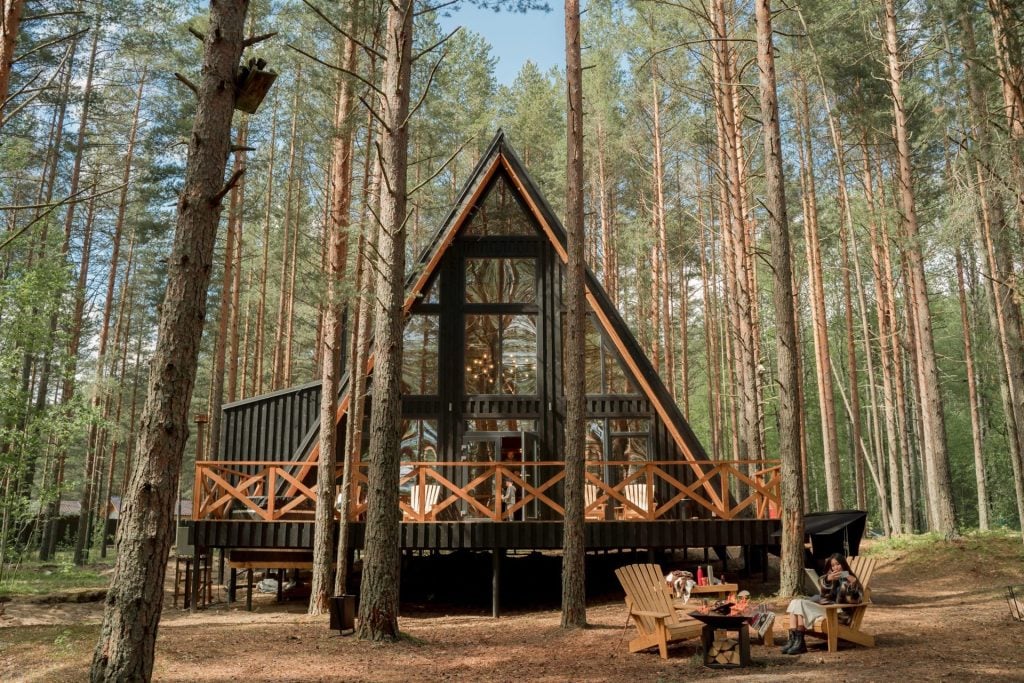
Installation
The installation of the glass plays a pivotal role in determining the overall cost of owning a glass house. The intricate and labor-intensive nature of the installation process can escalate expenses. Larger or intricately designed panels may necessitate specialized equipment and skilled labor while opting for high-end framing materials like steel or aluminum can further elevate costs compared to traditional alternatives.
In addition, the location of the glass households sways over the installation expenses. Remote or challenging-to-reach sites may demand extra time and resources for the glass installation. When allocating a budget for the installation of a glass house, one must duly factor in the cost of skilled labor essential for the proper and proficient installation of the glass panels.
Type of Glass
The selection of glass for glass houses encompasses a range of options, each with its associated cost. Factors such as the type of glass—such as tempered, laminated, or energy-efficient—and additional features like insulation or customization contribute to the varying price points.
Tempered Glass: This type of glass is often used in glass homes due to its strength and safety features. Tempered glass is heated and then cooled rapidly, making it much stronger than regular glass.
Laminated Glass: The production of laminated glass involves the process of interposing a layer of plastic between two glass sheets, forming a robust and resilient composite material. This construction method enhances the glass’s durability, strength, and resistance to breakage, making it a reliable choice for various applications, including glass houses.
Insulated Glass: Insulated glass is made by sandwiching two or more panes of glass together with a sealed air space in between. This type of glass is often used in glass homes for its energy efficiency. The sealed air space helps to reduce heat loss, making it easier to maintain a comfortable temperature inside the house.
Low-E Glass: Low-E glass is precisely engineered with a specialized coating that effectively reflects heat, making it an optimal choice for regions with extreme temperature variations. Its widespread use in glass homes stems from its remarkable energy efficiency. By effectively regulating heat transfer, this type of glass aids in maintaining a cool interior during summer and a warm one during winter, resulting in enhanced comfort and reduced energy consumption.
Tinted Glass: Tinted glass is a common choice for glass homes, serving multiple purposes. Its primary advantages include reducing glare, ensuring privacy, and mitigating the entry of excessive heat into the living space. These qualities contribute to a more comfortable indoor environment, especially during summer.
Final Thoughts
Now that you know the cost of owning a glass house, are you considering building one? If so, we hope our guide has given you a clear idea of what it will take to make your dream home come true.
We know that the thought of building a glass house can be overwhelming—but it doesn’t have to be! Brittany Corporation has an extensive network of trustworthy contractors ready to help you make your dream home. If you’re ready to experience luxury, you know we have them through our luxury real estate in Daang Hari Subdivisions and Forresta in Alabang.
If you’re ready for a luxury home experience unlike any other, contact us today!
What affects glass prices?
Various factors can influence how much should you pay when you plan to build a glasshouse. These include the type of glass, the size, and the level of customization required. High-end glass materials like low-e or tempered glass may be more costly than standard glass. Similarly, larger glass panels or custom shapes can also increase the cost of the glass. The glass cost can also be affected by the glass supplier’s location and the glass’s availability.
How do you calculate glass prices?
The calculation of glass price involves several factors. Firstly, the type of glass required for the project needs to be determined, as different types of glass have varying costs. The size and shape of the glass also play a significant role in the calculation of the price, as larger or custom-shaped glass panels tend to be more expensive. The level of customization required, such as tinting or frosting, can also increase the cost. The glass supplier’s location and the glass’s availability can also impact the price. Once all these factors are considered, the cost of labor involved in cutting, finishing, and installing the glass must also be considered.
Suggested Read: 10 Simple Ways To Contribute To Your Community
Suggested Read: Is Modern Glass House Design Worth Investing In
Suggested Read: Pros And Cons Of Glass Houses For Summer Living
